Contact us today:

(847) 934-4500
tdaro@bernardandcompany.com

Contact us today:
(847) 934-4500
tdaro@bernardandcompany.com
El futuro de la producción optimizada de herramientas de corte, AIMS conecta procesos secuenciales de producción de herrammientas: véalo en IMTS, Chicago en Septiembre
Julio 2022: Una vez más, ANCA está a la vanguardia de la innovación con AIMS – ANCA Integrated Manufacturing System. Una integración de toda la fábrica de la Industria 4.0, AIMS es la solución de ANCA para considerar la fábrica como una sola máquina. En lugar de separar el flujo de trabajo en muchos elementos diferentes de diseño, preparación en blanco, rectificado, marcado láser, lavado, embalaje y envío, AIMS agiliza todo el proceso de fabricación de herramientas y tecnologías complementarias.
Una célula AIMS interactiva y en pleno funcionamiento estará exhibido en IMTS, Chicago, 12-17 septiembre. La demostración muestra los módulos principales del Sistema AIMS: una estación de preparación de trabajo AutoSet, AutoLine para la trasferencia de paletas y herramientas tales como AutoFetch, un robot responsible de la transferencia de materiales entre procesos: paletas y herramientas individuales entre la preparación de trabajo, el rectificado y medición de herramienta en la maquina de medición ZOLLER.
Con AIMS, ANCA está respondiendo a los desafíos comunes en el sector de fabricación de herramientas de costo y disponibilidad de mano de obra, así como eficiencias de seguridad y producción. Acceso a personal cualificado y la necesidad de eliminar tareas simples y repetibles que podrían automatizarse fácilmente: AIMS maximiza la productividad de los rectificadores y, en general, mejora la Eficacia General del Equipo. La integración con sistemas ERP para agilizar los flujos de trabajo es también una de las características importantes de AIMS.
AIMS no es un producto único, sino más bien un conjunto o ecosistema de bloques de construcción interconectados que se pueden configurar para satisfacer los requisitos de un cliente individual. Los fabricantes pueden construir su sistema AIMS gradualmente utilizando componentes independientes AIMS Ready, que se pueden actualizar fácilmente a totalmente automáticos cuando sea necesario. Los clientes pueden abordar primero sus problemas más urgentes y escalonar la implementación durante un período de tiempo. Esta opción escalonada hace que AIMS sea una solución factible para los clientes a medida que invirten en esta tecnlogía revolucionaria y se dan cuenta del potencial de su negocio.
El Gerente de Producto de AIMS, Jan Irzyk, dijo, “Estamos encantados de presenter un modelo físico y funcional de AIMS para que los clientes comprendan el poderoso potencial de la fabricacion verdaderamente integrada.”
“AIMS se puede configurar de muchas maneras, la célula IMTS demuestra un flujo de trabajo de fabricación desatendido de dos variedades de fresas finales en una máquina ANCA MX7. Una parte importante de este flujo de trabajo es el proceso de medición y compensación de bucle cerrado utilizando ZOLLER Genius como estación de medición. Dependiendo de los requisitos de un cliente individual, nuestro sistema puede transferir automáticamente una herramienta del lote molido, limpiarla, medir las geometrías requeridas y transferir los resultados a la rectificadora respectiva donde se está llevando a cabo la compensación de parámetros del rectificado para lograr la tolerancia dimensional requerida del lote.”
Los vistantes del stand de ANCA en IMTS (Stand nu. 237406) pueden ver:
Jan concluyó, “En el futuro no muy lejano podremos demonstrar la capacidad de AIMS en un entorno de producción, lo cual es muy emocionante, así que mira este espacio, ¡hay mucho más por venir!”
######
Para más información, por favor pongase en conta:
Johanna Boland
Gerente de Comunicaciones Corporativas del Grupo
M: +61 407799779
ANCA es un fabricante líder en el mercado de máquinas rectificadoras CNC. Fue fondado en en 1974 en Melbourne, Australia, donde la empresa todavía tiene su sede global. ANCA tiene oficinas en Inglaterra, Alemania, China, Tailandia, India, Japón, Brasil y Estados Unidos, así como una amplia red de representantes y agentes en todo el mundo.
Los rectificadores CNC ANCA se utilizan para fabricar herramientas y componentes de corte de precisión en una amplia gama de industrias competitivas, como la fabricación de herramientas de corte, automotriz, aeroespacial, electrónica y médica.
Continue reading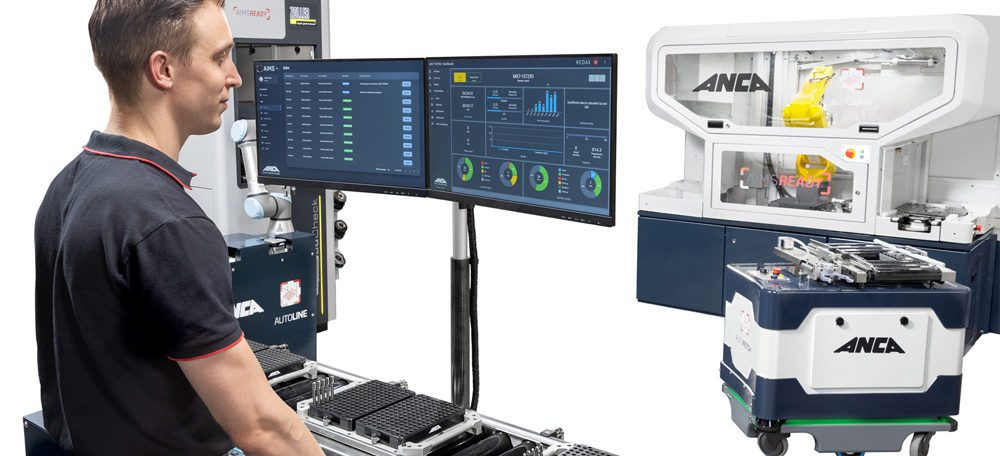
The future of optimized cutting tool production, AIMS, connects sequential tool production processes – see it at IMTS, Chicago in September
Once again ANCA is on the forefront of innovation with AIMS – ANCA Integrated Manufacturing System. An Industry 4.0 factory wide integration, AIMS is ANCA’s solution for considering the factory as a single machine. Rather than separating workflow into many different elements of design, blank preparation, grinding, laser marking, washing, packing and shipment – AIMS streamlines the entire tool manufacturing process and complementary technologies.
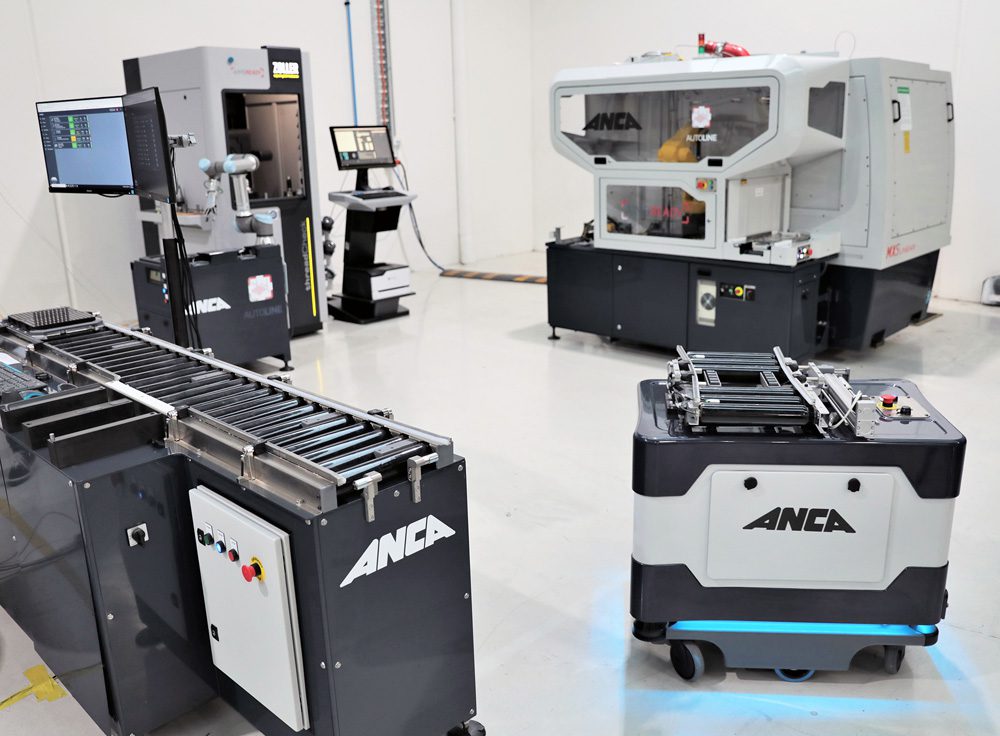

An interactive and fully operating AIMS cell will be on display at IMTS in Chicago, September 12-17, 2022. The demo showcases the main modules of the AIMS system – an AutoSet job preparation station, AutoLine for pallet and tool transfer as well as AutoFetch – a robot responsible for material transfer between processes — pallet and individual tools between job preparation, grinding and tool measurement on ZOLLER measuring machine.
With AIMS, ANCA is responding to common challenges in the tool manufacturing sector of labor cost and availability, as well as safety and production efficiencies. Access to skilled staff and the need for elimination of simple, repeatable tasks which could be easily automated – AIMS maximizes grinders’ productivity and, in general, improves Overall Equipment Effectiveness. Integration with ERP systems to streamline workflows is also one of the important AIMS features.
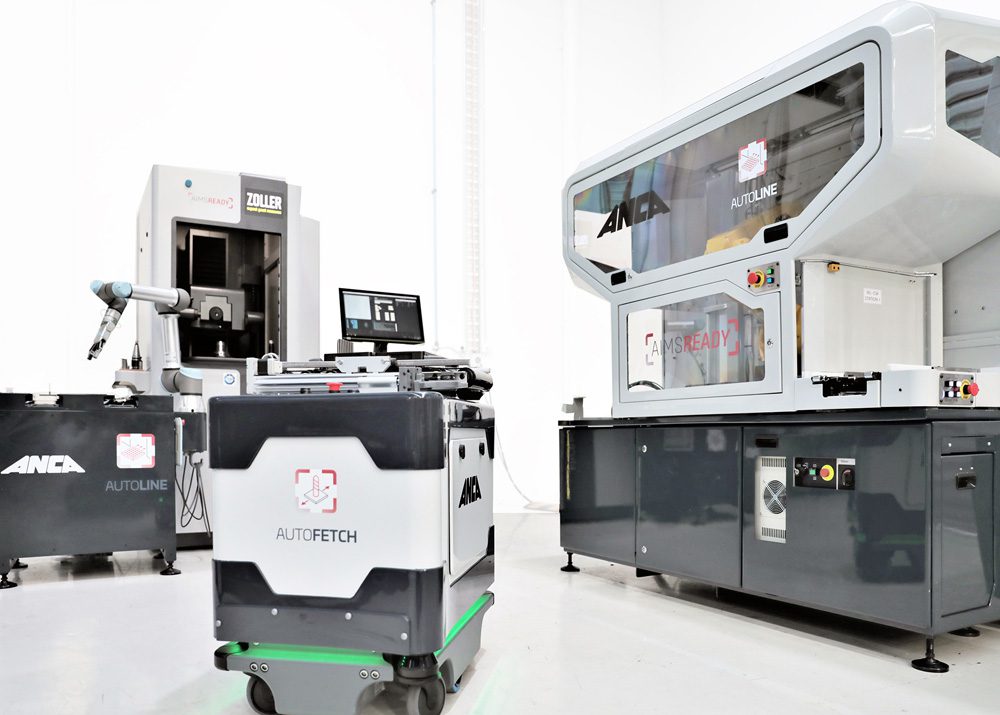
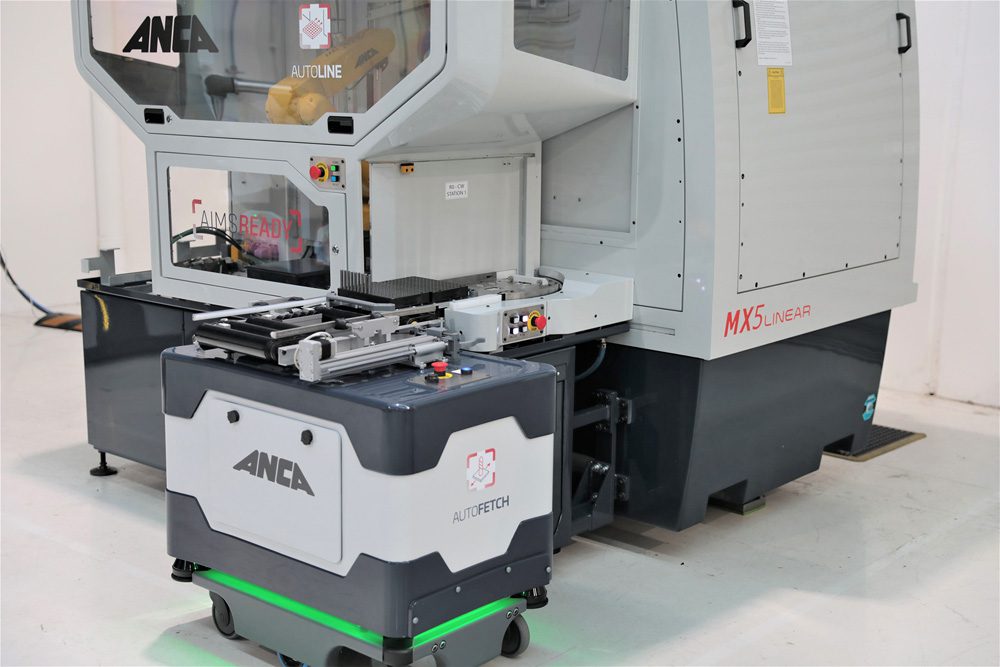
The principles of the AIMS system are flexibility and modularity. This means each system can be tailored to an individual customer’s needs using the right building blocks – or modules. It can scale from a purely software-based monitoring solution to a fully automated manufacturing cell.
AIMS is not a single product but rather a suite or ecosystem of interconnected building blocks which can be configured to satisfy an individual customer’s requirements. Manufacturers can build their AIMS system gradually using standalone AIMS Ready components, which can be easily upgraded to fully automatic when required. Customers can tackle their most pressing issues first and stagger implementation over a period of time. This staggered option makes AIMS a feasible solution for customers as they invest in this revolutionary technology and realize the potential for their business.
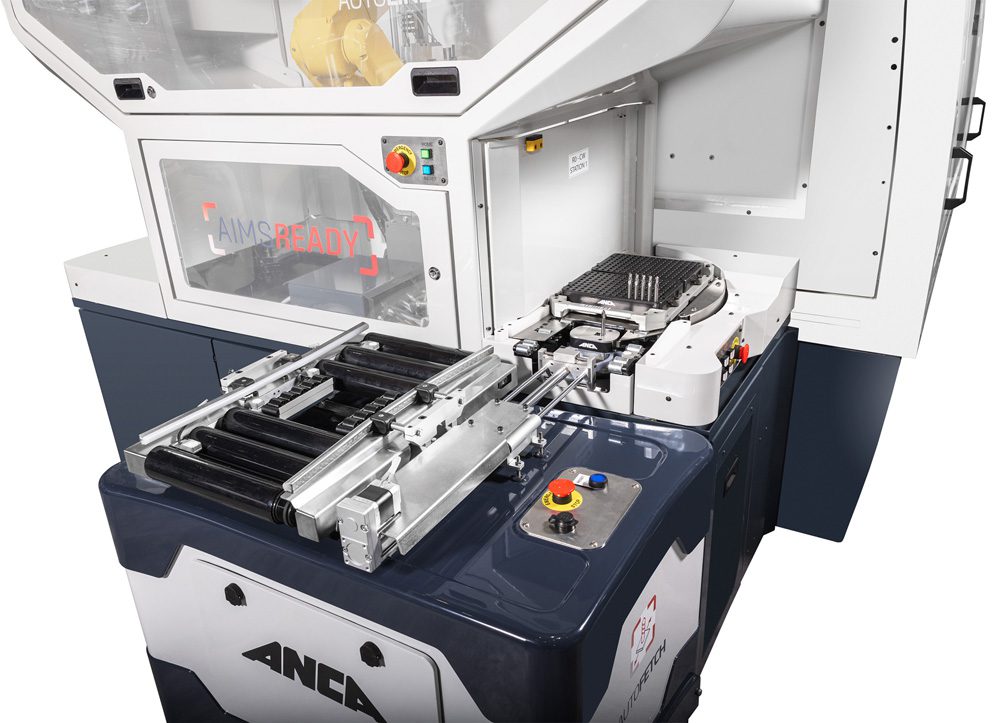
Jan Irzyk, AIMS Product Manager said: “We are delighted to present a physical, working model of AIMS for customers to understand the powerful potential of truly integrated manufacturing.”
“AIMS can be configured in many ways, the IMTS cell demonstrates an unattended manufacturing workflow of two varieties of endmills on one ANCA MX7 machine. An important part of this workflow is closed loop measurement and compensation process using ZOLLER Genius as a measurement station. Depending on an individual customer’s requirements, our system can automatically transfer a tool from the ground batch, clean it, measure required geometries and transfer the results to the respective grinder where grinding parameter compensation is taking place to achieve required dimensional tolerance of the batch.”
Visitors to ANCA’s booth at IMTS (Booth 237406, North Building, Level 3) can see:
Jan concluded, “In the not-too-distant future we will be able to demonstrate the AIMS capability in a production environment, which is very exciting – so watch this space, there’s much more to come!”
For further information, please contact:
Johanna Boland
Group Corporate Communications Manager
M: +61 407799779
Johanna.Boland@anca.com
ANCA is a market leading manufacturer of CNC grinding machines. It was founded in 1974 in Melbourne, Australia, where the company still has its global headquarters. ANCA has offices in the UK, Germany, China, Thailand, India, Japan, Brazil and the USA, as well as a comprehensive network of representatives and agents worldwide.
ANCA CNC grinders are used for manufacturing precision cutting tools and components across a diverse range of competitive industries including cutting tool manufacture, automotive, aerospace, electronics and medical.
Continue reading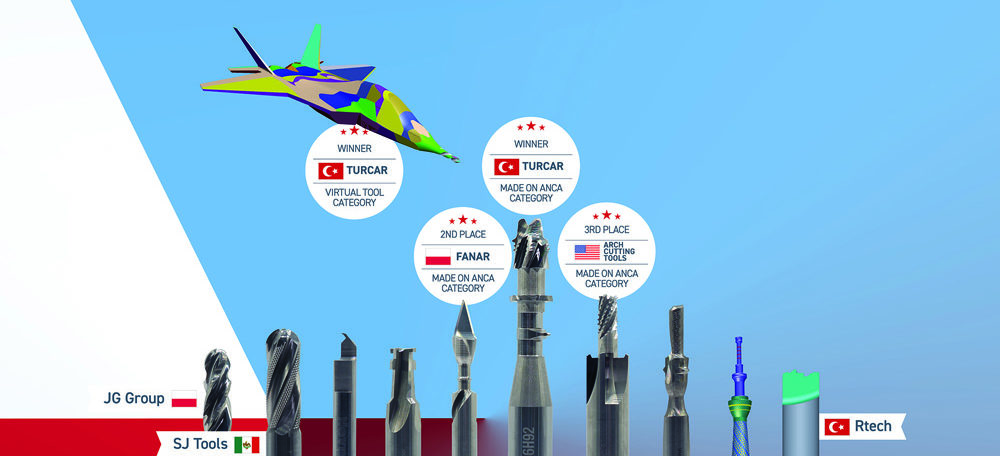
In an industry moving at lightning speed, ANCA Tool of the Year (TOTY) celebrates the deep experience and creativity of the craftspeople who create the next generation of cutting tools
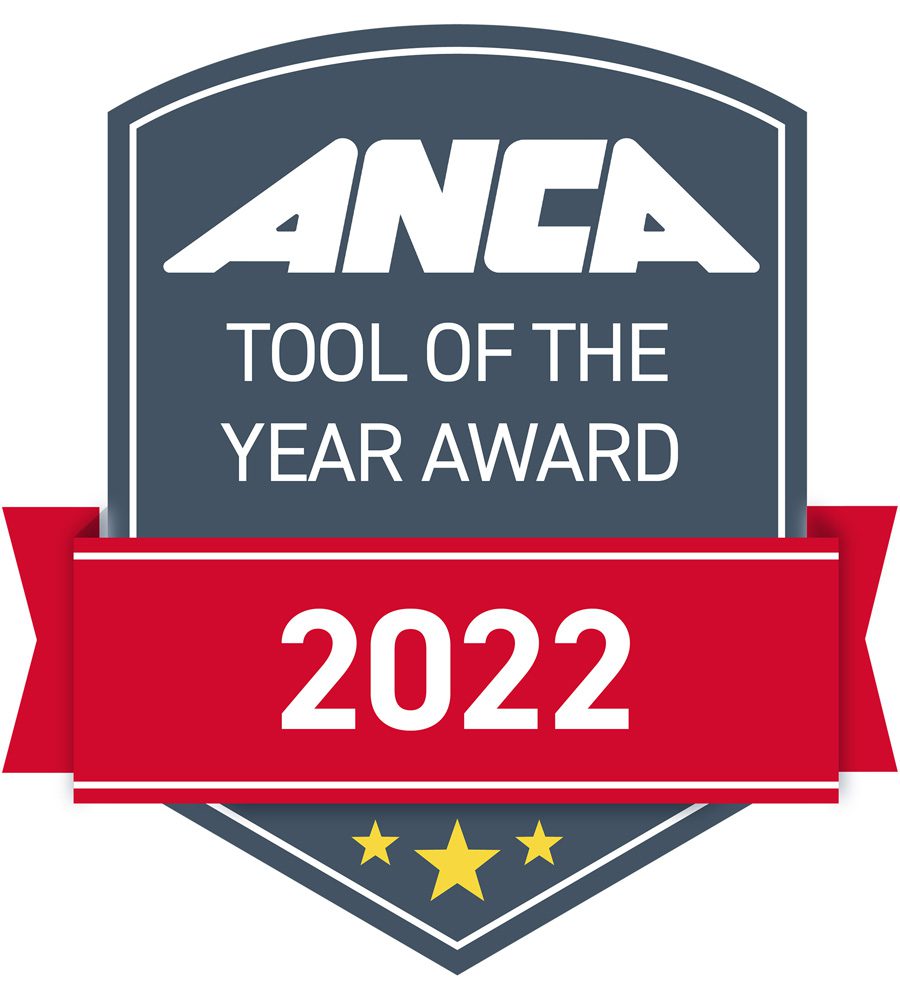
Now in its fifth year, ANCA’s industry-first competition launched for 2022 at the first-ever GrindingHub – the new industry meeting place for grinding technology in Stuttgart, Germany. The “Oscars” of the Cutting Tool industry, participants and winners in this prestigious contest achieve important brand recognition as well as cash and other prizes. Last year, the awards achieved a total digital audience reach of 8.1 million readers via the media with 37 global entries seen by over 202,480 fans generating over 200,000 engagements on social media.
Patrick Boland, Co-Founder at ANCA comments, “Every year brings yet another step change in technology that enables cutting tool makers to increase their sophistication in designing and manufacturing products. This year, we brought our ANCA Integrated Manufacturing System (AIMS) to GrindingHub, a huge leap in technology to create the factory of the future. Efficient, automated and operating 24/7, the AIMS factory uses modular program scripts, remote access and cutting-edge machines to operate at maximum efficiency.”

“During my 40-plus years, ANCA has consistently led the industry in designing advanced technology. For example, in 1986, we launched the TG4 – the first machine ever to automate the measurement of tool geometry, thereby making regrinding possible. Reviewing Tool of the Year entries, I am always in awe of the passion and talent of customers who push our machines to their limits and create tooling masterpieces.”
John Saunders from Saunders Machine Works and founder of YouTube channel NYC CNC
and first time TOTY judge said, “Seeing the creative use of custom tooling is amazing. Being able to reduce setups, improve cycle time or even eliminate tools with the use of modern, custom carbide is something all shops should consider. It’s an honor to be part of this competition and I hope it can help raise awareness about the benefits of a well-designed and executed cutting tool.”
ANCA Tool of the Year 2022
ANCA’s Tool of the Year customers can submit their favorite tool, with the winners being judged and announced live at IMTS. There will be two competition categories to recognize both the functionality and creativity of cutting tool manufacturers.
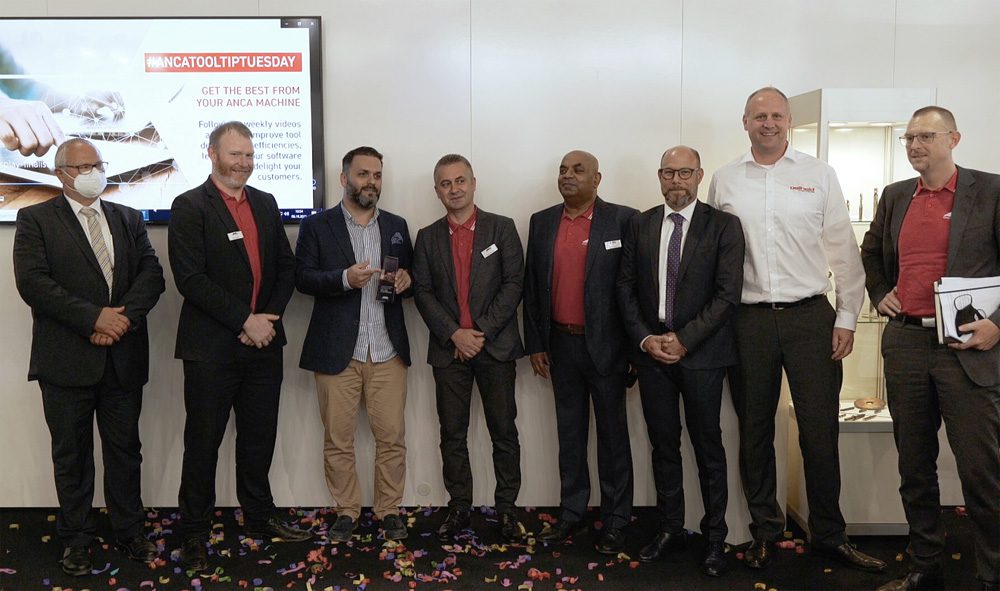
The winner of #MadeonANCA receives $10,000 AUD worth of ANCA innovations for parts, accessories or software that fit the winner’s grinding needs or a trip to ANCA’s headquarters in Melbourne, Australia. This amazing prize further includes access as an ANCA VIP to exclusive opportunities with our ANCA tool experts. The winner of the most innovative virtual tool will receive a full CIM software package.
Submissions are open from May 17th to August 8th, 2022.
The competition will be based on the passion and the craft of tool making and celebrate our highly skilled tool grinding community.
Judging panel
At IMTS, the top five finalist tools will be judged on the following criteria:
For further information, please contact:
Johanna Boland
Group Corporate Communications Manager
M: +61 407799779
Johanna.Boland@anca.com
ANCA is a market leading manufacturer of CNC grinding machines. It was founded in 1974 in Melbourne, Australia, where the company still has its global headquarters. ANCA has offices in the UK, Germany, China, Thailand, India, Japan, Brazil and the USA, as well as a comprehensive network of representatives and agents worldwide.
ANCA CNC grinders are used for manufacturing precision cutting tools and components across a diverse range of competitive industries including cutting tool manufacture, automotive, aerospace, electronics and medical.
Continue reading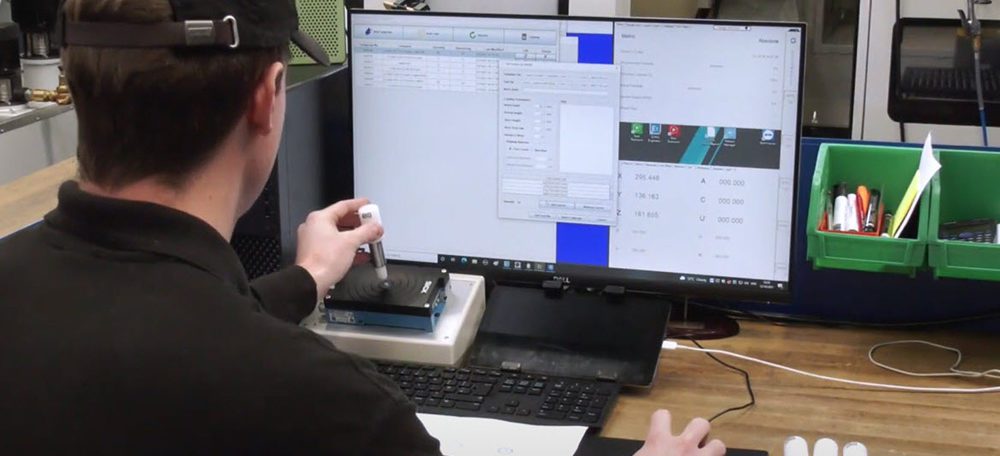
Located in Peterborough, England, Marlor Tooling has been designing and manufacturing cutting tools for more than 20 years. The cutting tool manufacturer specializes in delivering innovative solutions for the aerospace, automotive, energy, woodworking and general subcontract markets.
Discussing the business and the relationship with ANCA, Kevin Taylor from Marlor Tooling says: “Our business has grown with the technology. We aspire to have the best technology at all times and it has been an absolute pleasure working with the latest ANCA machine, the MX7 Linear. The quality of grind has always been there with the ANCA products, but this particular machine with the RFID technology has taken the loading of the machine to a different level. It’s an absolutely fabulous idea, chaotic loading is what it’s called and we have maximized the use of that. Things that we would consider being unable to load prior to the arrival of this machine, we now load. Whether it is a 1-off, 2-off, 3-off or a mixture of tools, it doesn’t mean anything to us now — everything can be automated. We are now trying to count our lead times in days and not weeks.”


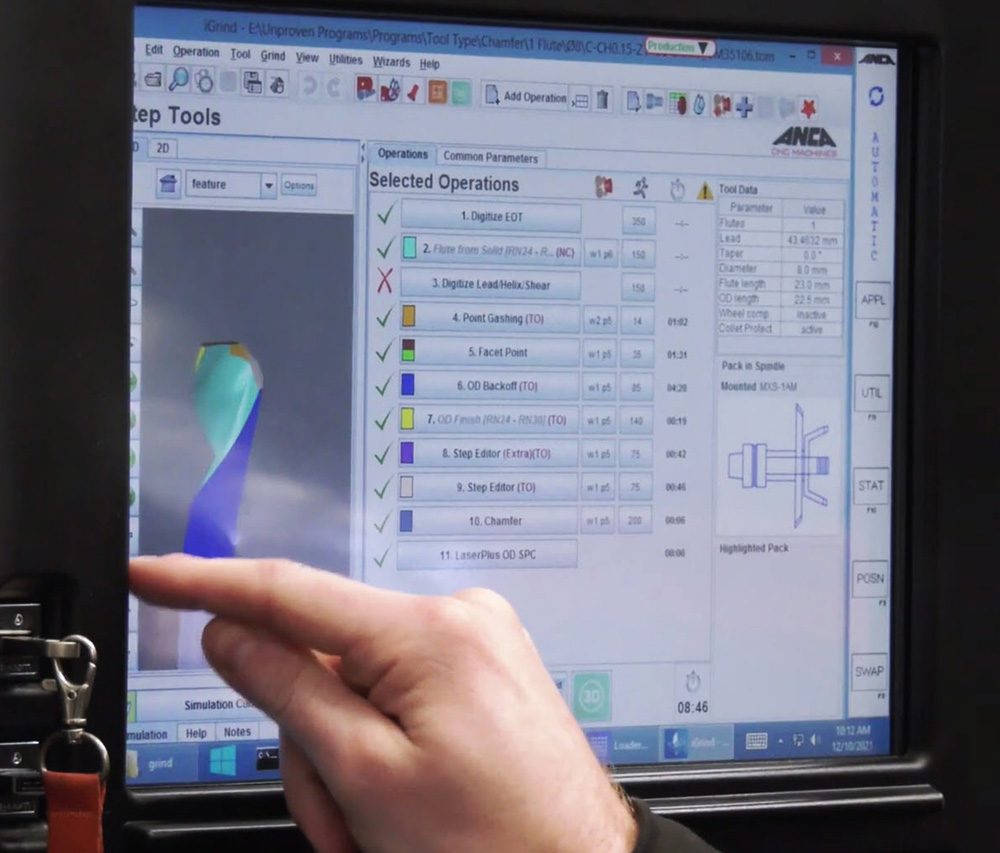
The ANCA MX7 Linear is a powerful, versatile CNC tool grinder designed for production grinding. It is built to meet the demands of high output, high precision manufacturing. The powerful 38 kW (51 HP) permanent magnet spindle provides high torque at lower RPM which is ideal for carbide grinding and a wide range of other applications. The MX7 Linear is a hard-working, high productivity system with unique features that enable it to handle varied batch sizes with minimum set-up time. The new cylindrical linear motor design increases reliability further and ensures a superior surface finish.
Commenting on the latest installation of the MX7 Linear with RoboMate loader which includes a FANUC LR Mate 200iD robot, Adrian Wright from ANCA says: “Marlor Tooling came to us after the FX7 machine was installed. They wanted a good all-around solution for chaotic regrinding, this means they can load tools from 3mm up to 16mm diameter and it doesn’t matter what the tool type is. We can also do small-batch manufacturing as well, once again it does not matter what the size of the diameter of the tool is for the loading sequence, as long as it is within the 3-16mm diameter range. The robot is programmed, and the program is done prior to the tools being loaded into the pallet. Then the machine does the rest — it changes the collets and it can measure in process with the LaserPlus System.”
The LaserPlus system provides accurate and repeatable measurement of tools inside the machine. The LaserPlus can automatically measure OD, run-out, EOT, ball nose and corner radius profile tools. Typically, the LaserPlus can achieve +/- 3 microns accuracy or better. An air blast unit ensures that coolant or contaminants are cleaned from the tool to ensure nothing hinders the measurement process.
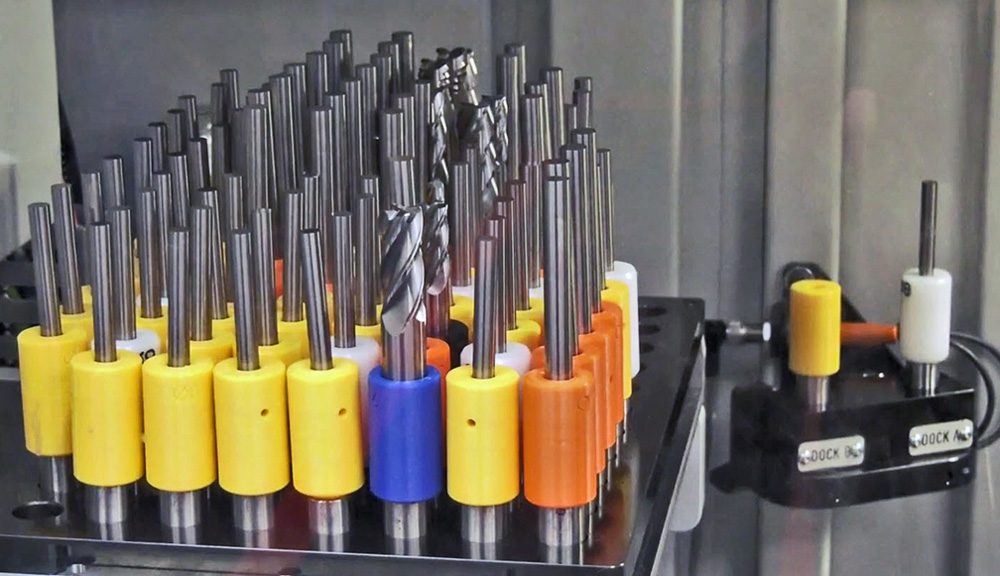
The MX Linear range uses ANCA LinX Linear Motors for axis motion (X & Y axes). In conjunction with linear scales, a high level of machine precision and performance can be achieved, resulting in superior tool accuracy and surface finish. With LinX Linear Motors there is no loss of machine accuracy over time due to wear and it is not affected by temperature variations. The LinX Linear Motor has higher axis speed and acceleration leading to reduced cycle times. It achieves this while maintaining a smoother axis motion.
With two pallets in the machine, the ANCA MX 7 Linear can accommodate up to 200 tools. Referring to this, Adrian says: “it really doesn’t matter if the customer comes to Marlor today and requires five tools to be reground and turned around by tomorrow, the operator can change the five tools at the front of the pallet, or move them to the back of the pallet, if necessary, to ensure a fast turnaround of tools and the machine just carries on.”
“To go from a three-week lead time down to a 24-hour lead time is music to any business owner’s ears. We have the ultimate in flexibility here. When you combine this system with the LaserPlus or LaserUlta that can measure the tools in-process, you can intermingle the tools. So, it doesn’t matter if it is a re-grind tool or a newly manufactured tool, we can slot in any tooling and it is the solution for everything.”
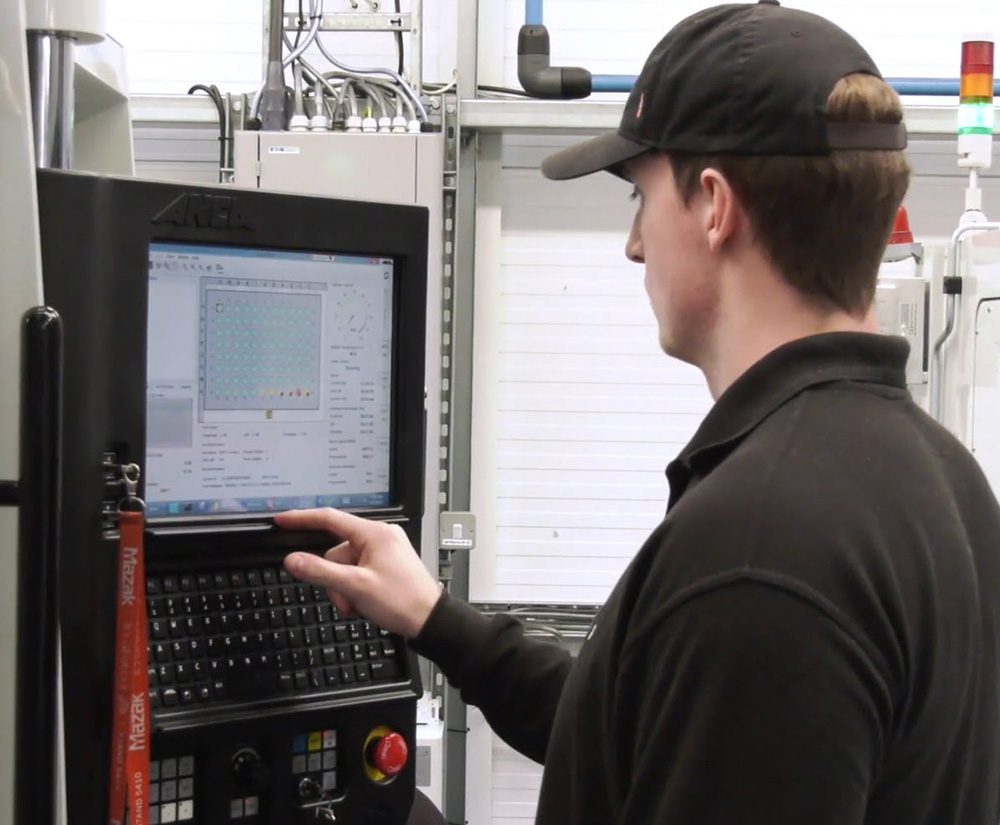
Commenting upon the reliability of the ANCA automation system, Kevin Taylor continues: “It has been great, the system is very solid. We also do our programming offline, and that has its advantages too. We don’t have to stop the machine to do our programming, as the machine is automatically loading the next tool constantly. It’s not a machine you would have traditionally been running manually through the day and loading for automation overnight – it makes no sense. It is loaded all day and all night. The machine does not stop at all, where are some of our other machines are restricted in size, diameter and tool types – this machine does not have those restrictions.”
For further information, please contact:
Johanna Boland
Group PR and Communications Manager, ANCA
M: +61 407799779
Johanna.Boland@anca.com
ANCA is a market leading manufacturer of CNC grinding machines. It was founded in 1974 in Melbourne, Australia where the company still has its global headquarters. ANCA has offices in the UK, Germany, China, Thailand, India, Japan, Brazil and the USA as well as a comprehensive network of representatives and agents worldwide.
ANCA CNC grinders are used for manufacturing precision cutting tools and components across a diverse range of competitive industries including cutting tool manufacture, automotive, aerospace, electronics and medical.
Continue reading
ANCA recently launched “The ANCA Academy,” a series of videos that cover a different technical topic each month. The third video in the series is called “Introduction to ANCA Software Applications,” and introduces the Academy’s new host, Hugh Ingham.
Biography
Hugh Ingham, ANCA
Hugh Ingham started at ANCA as an applications engineer in 2015, and for three years, was involved in testing and the development of new standard products, as well as grinding applications for custom solutions. In that time, he had multiple opportunities to travel to Thailand, Japan and South Korea gaining firsthand knowledge of customers’ experiences.
In 2018, Hugh was seconded for two years to ANCA Germany, functioning as both an applications and mechanical design engineer to deliver custom solutions to customers. This experience proved invaluable, as working directly with customers in Europe and seeing how they used ANCA’s products and how they could be improved – helps shape the way he approaches his job today. The scope and encouragement to explore new ideas, build new skills and develop as an engineer has driven Hugh’s passion for ensuring end-users get the most out of their technology.
In 2020, Hugh returned to Australia and since then has been continuing to develop custom solutions for a wide range of applications including medical, automotive, aerospace and more. Hugh is the host of ANCA Academy – a dedicated TV show for customers to learn more about ANCA’s products and solutions.
Continue reading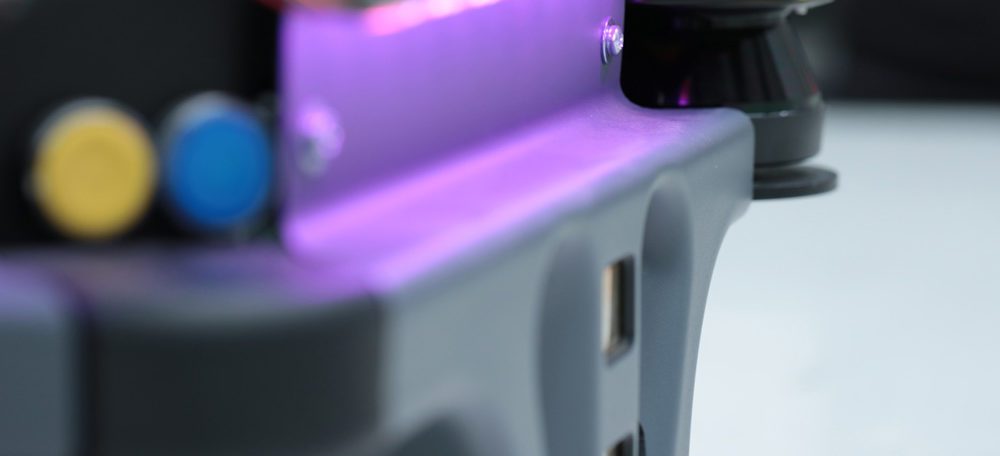
Transforming through innovation with ANCA’s AIMS: The future factory is efficient, automated and runs round the clock. It uses modular programs scripts, remote access, and cutting-edge machines to operate at maximum efficiency.
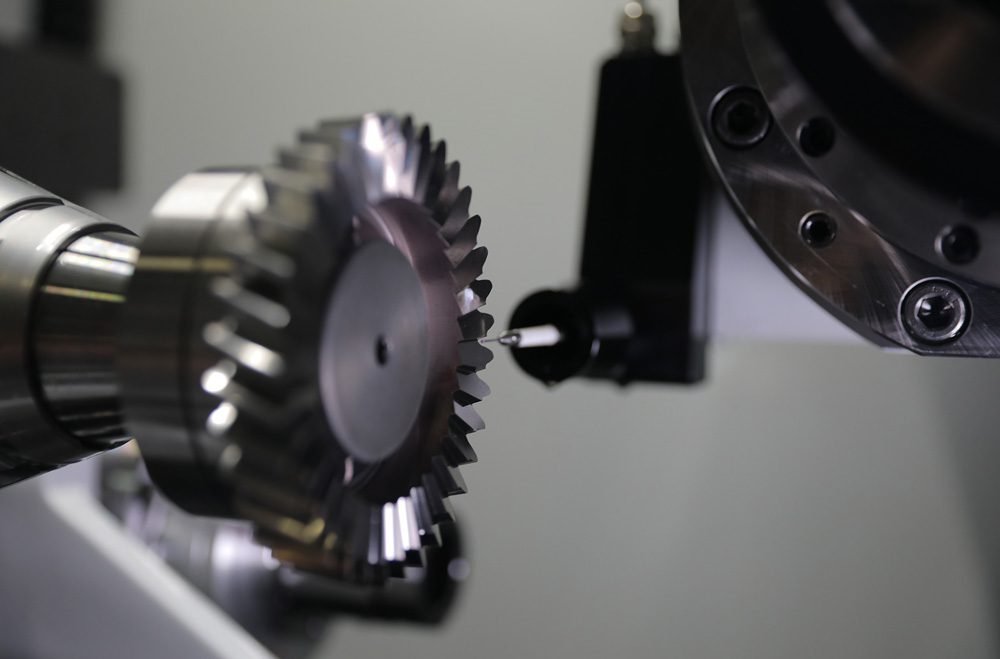
The world of CNC machining thrives on innovation. Grinding machines, cutting tools and software are constantly evolving to be more efficient, flexible, accurate and automated. ANCA chases customer requirements to identify the next challenge to solve — constantly iterating and refining its technology. Over its 40 plus years of operations, developments that were once considered cutting-edge are now business as usual — even at ANCA, we reflect on how revolutionary our early products felt.
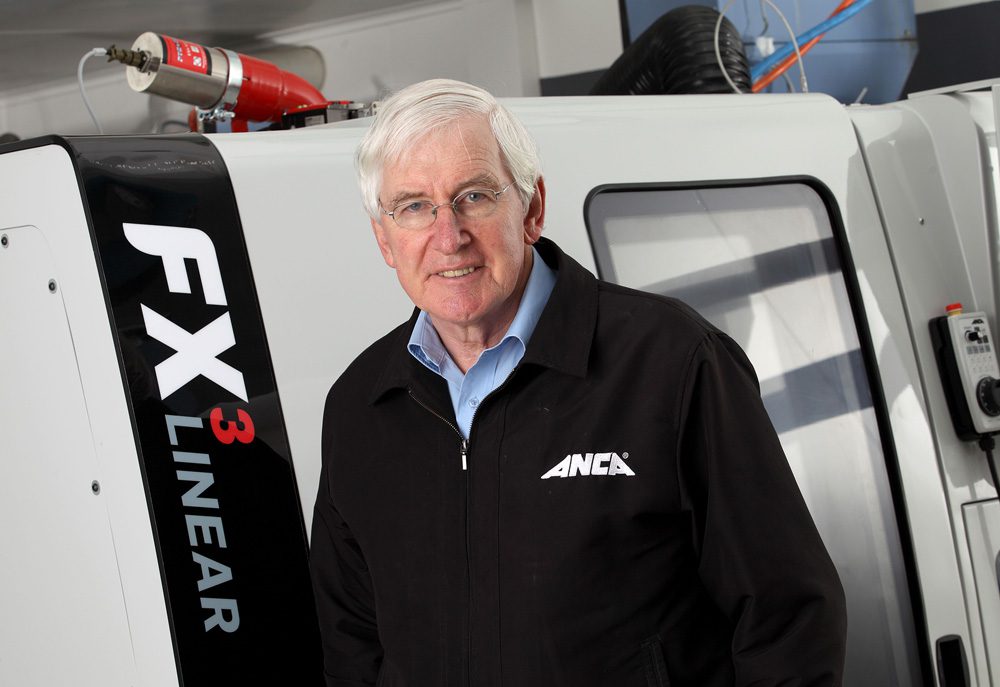
Pat Boland, ANCA Co-Founder and Joint Managing Director, said: “We can recall a time when it was almost impossible to resharpen cutting tools on a CNC machine. That was until 1986, when ANCA launched our TG4, the first machine in the world to automate the measurement of tool geometry and regrinding through probing.”
“Or when we introduced the System 32 which, for the first time, applied advanced robotic software to tool grinding which enabled significant opportunities, for example, the soft axis or soft machine kinematics which simplified the grinding of cutting tools. We’ve come a long way, from probing for cutting tools, leading the competition in five-axis grinding or from simulating grinding processes before grinding with the CIM3D.”
“Designing the best technology requires a multi-pronged approach. We immerse ourselves in the market; are continually inventing; keep a keen eye on new developments and bring them into our applications. We seek out intelligent, talented people, and interact with customers daily to understand their specific needs. This is how we design and manufacture our market-leading solutions.”
At GrindingHub ANCA will showcase its technology range at a newly designed stand that enables customers to grow capacity, improve profit margins and gain efficiencies. Deciding what technology to invest in should be driven by business goals, working with existing objectives, processes, data and ideas.
LAUNCHING THE CPX IN-PROCESS OD MEASUREMENT SYSTEM
The CPX in-process OD measurement system is a quality control system that monitors and controls the OD of ground blanks within a batch production.
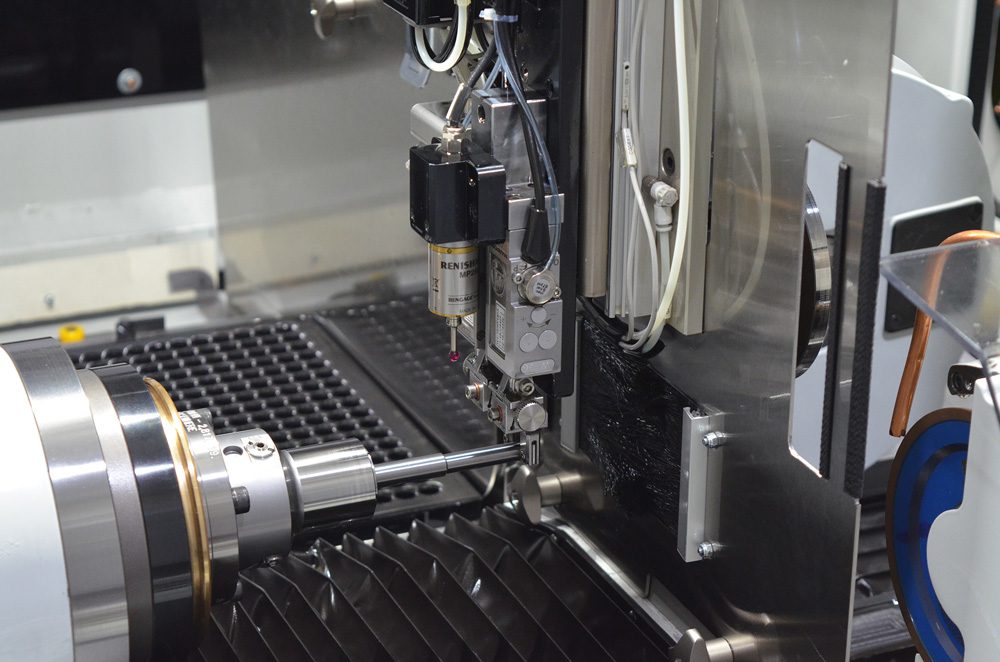
Batch grinding on a CPX with high material removal rates and to tight tolerances is a basic function of the machine, the OD measurement system takes it further by utilizing the Statistical Process Control (SPC) feature that comes standard with the OD measurement software. SPC is user defined, the tolerances along with the Cp and CpK values are constantly monitored, controlled, and reported to the user.
The OD measurement system is permanently mounted inside the machine and only called upon when required, based on the set tolerances and the frequency of measurement, an accurate in-process measurement and compensation is applied to maintain the blank OD to the nominal diameter.
The system is flexible with the ability to handle multiple diameters in one setup, making it perfect for complex blank geometries/shapes and longer batch runs.
AIMS
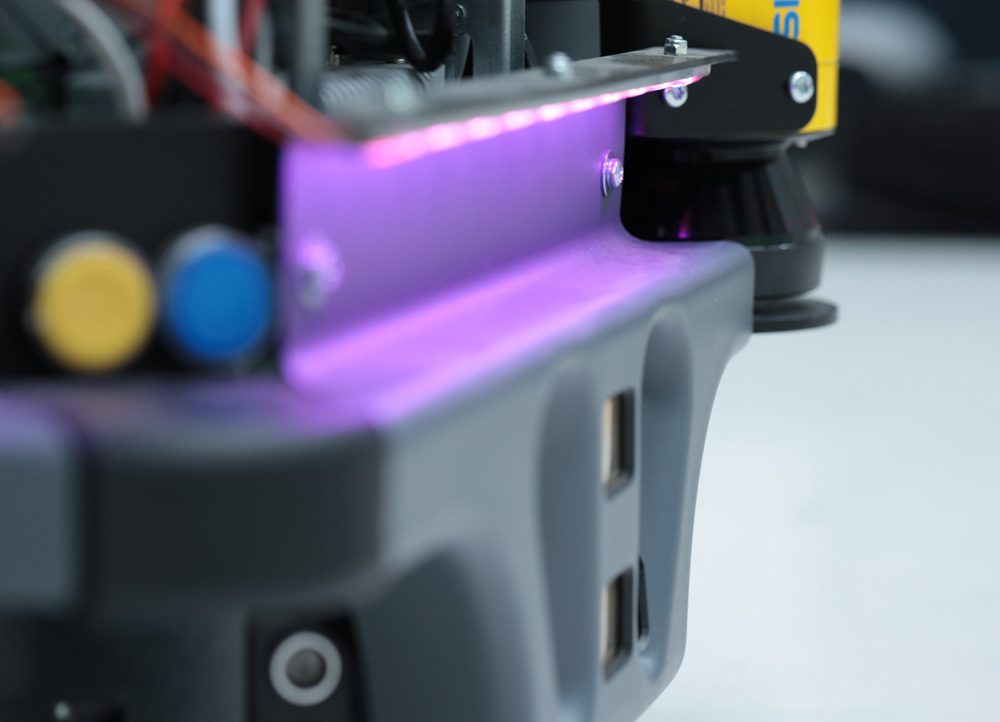
ANCA’s Integrated Manufacturing System (AIMS) is the future of optimized cutting tool production through streamlined manufacturing and connectivity. With ANCA and AIMS, customers can achieve continuous, unattended production that dramatically reduces non-productive machine time, with smart automation that connects sequential tool production processes and offers connectivity across the whole factory.
This is Industry 4.0 — factory-wide integration. The technology considers a factory as a single machine, rather than separating it into many different elements of design, blank preparation, grinding, laser marking, washing, packing and shipment. This is a powerful concept that brings together one ecosystem and builds it to be as efficient as possible. AIMS, being a modular solution, could be deployed in stages, allowing for easy, gradual and smooth transition from traditional to automated and integrated manufacturing.
An AIMS manufacturing cell will be displayed at GrindingHub, demonstrating a fully automatic process of tool manufacturing starting from the pallet with blanks and finishing with pallets with ground tools.
The GrindingHub demo consists of the following components:
AUTOMARKX: ANCA’S AUTOMATIC LASER MARKING STATION
AutoMarkX is an automatic stand-alone laser marking station replacing manual and labor-intensive processes. It is AIMS Ready, which means it can be used as a standalone machine but could be easily integrated to your lights out, unmanned AIMS manufacturing cell with automatic pallet transfer using AutoFetch robot.
The AutoMarkX eliminates the need for manual laser marking which is a repetitive and labor-intensive job which could be automated and therefore saving you money. By avoiding manual handling, tool quality is protected by eliminating risk of chipping.
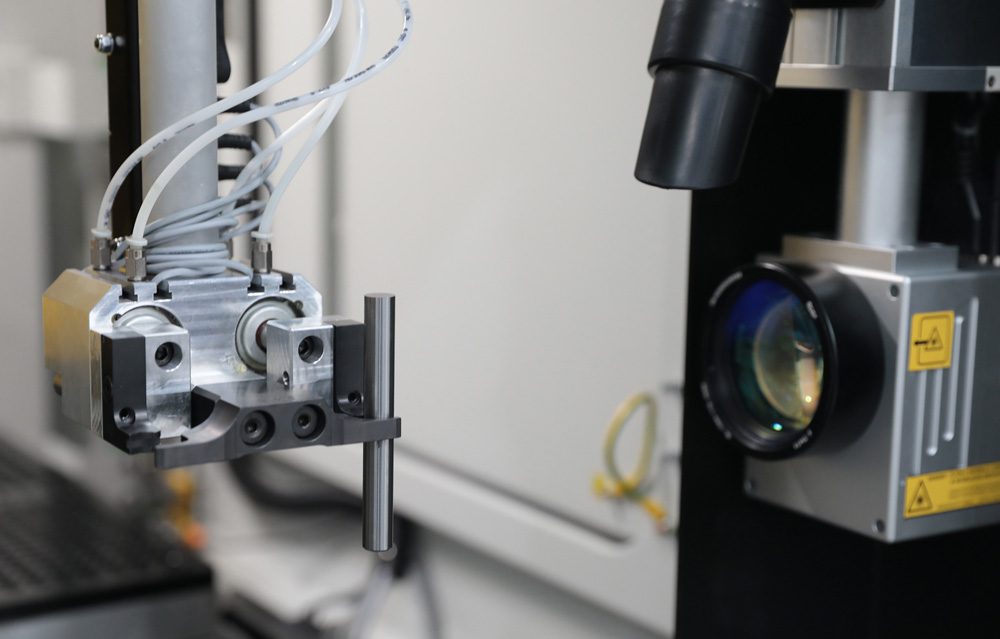
AutoMarkX accepts up to two full pallets of tools, which means you can mark a large batch of tools unmanned. Flexible marking means the message could be etched on a single side of the shank or on opposite sides of the shank as well as at the end of tool. The last option is particularly useful for applications where a unique tool identification code (e.g. Datamatrix) needs to be etched on the tool. Codes like Datamatrix are usually etched on the shank where they risk the exposure to excessive surface wear, rendering them unreadable. The end of tool is the best location to etch this type of code to overcome this issue.
AUTOMATED SMALL BATCH AND REGRINDING SOLUTION AND INSERT GRINDING DEMONSTRATIONS
ANCA understands the requirement to continuously reduce cost within the production processes which is a particular challenge in smaller production batches of complex tools and in regrinding process. To address this challenge ANCA has developed a flexible solution utilizing RFID technology, our LaserUltra closed loop measurement and barcode reader interfaced into our iGrind and end-customer’s ERP system. This system will be demonstrated on the FX7 Linear platform. The demonstration will highlight how to set up a tool for regrind utilizing a barcode reader and QR code, how to easily make adjustments within our ANCA software, what inputs are possible in an ERP system, setting up the RFID to allow mixed diameter automation and the actual grinding process itself. The FX7 Linear machine will also be fitted with the Pop-Up Steady, AutoStick, Auto Wheel Qualification and iView.
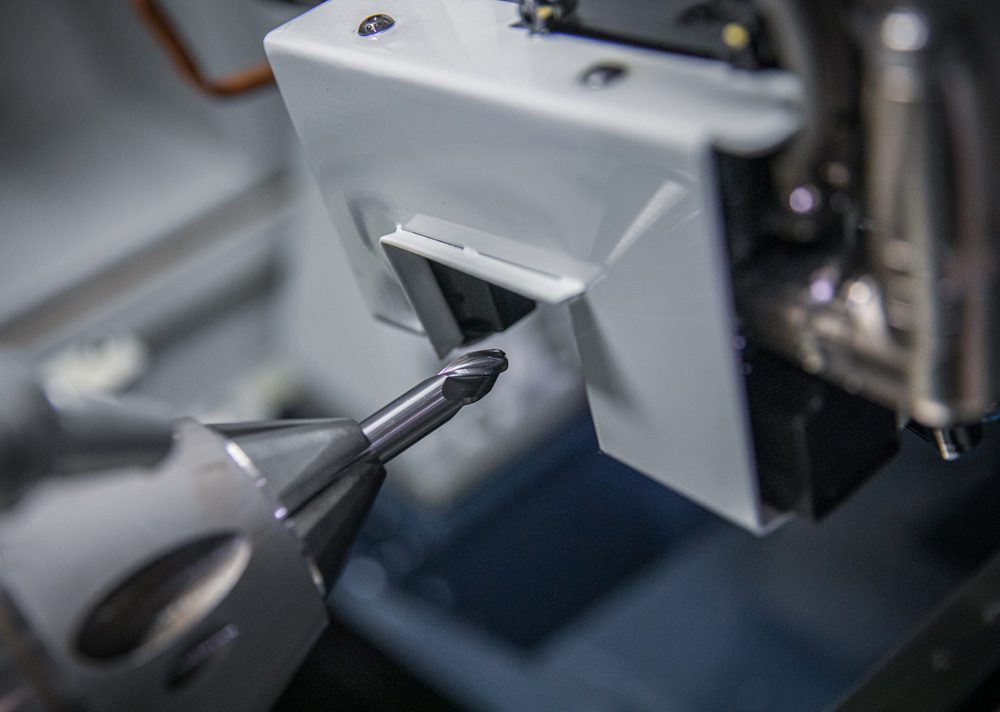
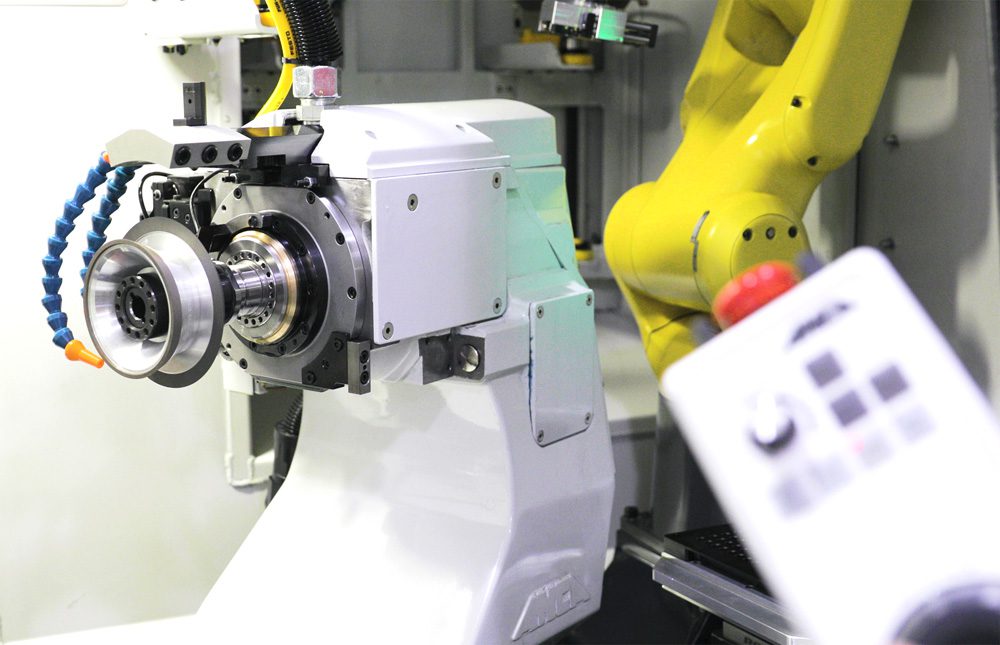
The standalone MX7 Linear with RoboMate loader will be demonstrating ANCA’s solution for grinding and auto loading of indexable inserts. The machine and loader will be installed with workholding, grippers, pallets and interchange station specifically for the manufacture of special inserts. Accessories fitted on the machine include the 4-station Auto Stick, Auto Wheel Qualification and LaserUltra.
GCX LINEAR: GEAR UP FOR SKIVING
Driven by the automotive industry’s electrification and the general rise of e-mobility, the demand for skiving cutters has seen 30% year on year growth. The GCX Linear provides a complete solution for customers to tap into this rapidly developing market, including the ability to produce skiving cutters, shaper cutters and regrinding of hobs. It offers advanced stand-alone software to design and optimize the tool, neatly interfaced with the gear tool package inside ANCA’s renowned ToolRoom software. The machine is designed for accuracy with features including all axes with LinX linear motors and an enhanced headstock. GCX Linear also added a series of technologies: AEMS dressing, MTC on grinding spindle and dresser spindle, integrated gear tool measurement and direct compensation – setting the new standard for producing skiving tools that achieve the highest DIN AA quality class.
Due to the skiving tool’s novelty, many gear measurement machines still don’t have the correct mathematical model for evaluating the quality of the cutter. Leading the world in solving the quality control issue, ANCA developed the world-first integrated gear tool measurement system, which enables the grinding-measuring-compensation all done in the machine, as the only practical closed-loop solution.
At GrindingHub, the GCX Linear will demonstrate the skiving cutter production process assisted with the industry-first integrated gear tool measurement system.
NEW TOOLROOM RN35
Besides demonstrations on ANCA’s industry-leading ToolRoom and CIM3D software, visitors will have a special preview of the upcoming RN35 release.
ToolRoom RN35 focuses on productivity and cycle time improvements especially machine running costs. New process optimization features help to enable reduction in cycle time which in return provides better quality tools and wheel life. This includes automated reduction in air grinding time and gaps calculated based on tool simulation models. Some of the major enhancements include:
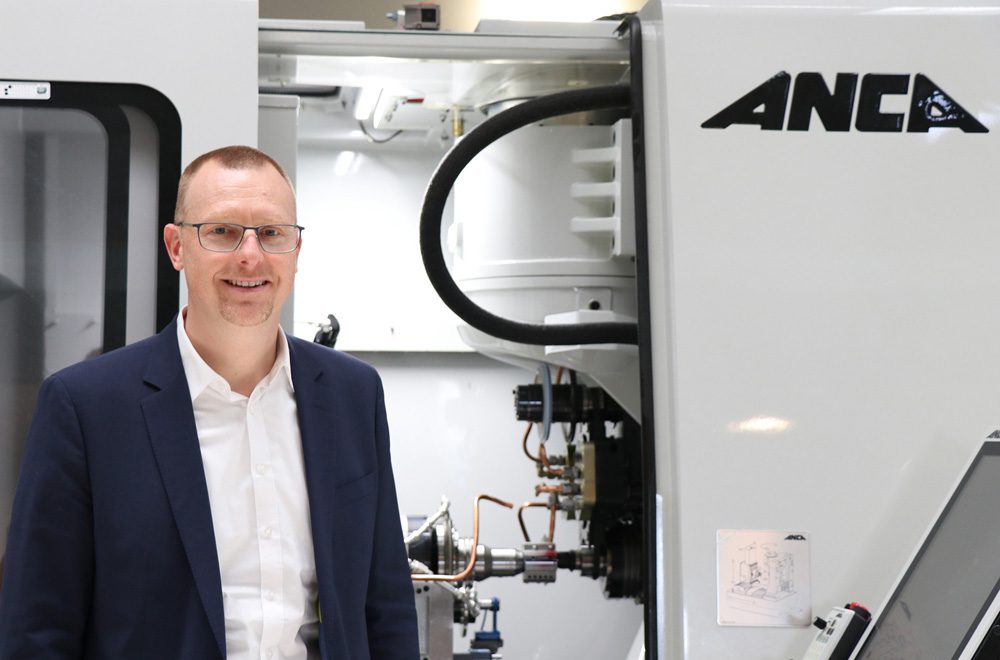
For further information, please contact:
Johanna Boland
Group Strategy and Communications Manager
Tel.: +61 407 799 779
E-Mail: Johanna.Boland@anca.com
ABOUT ANCA
ANCA is an advanced manufacturing company of CNC grinding machines, automation, motion control solutions and sheet metal fabrication. Founded in 1974 in Melbourne, where its global headquarters remain, it has grown to a thriving team with over 1000 talented people who work together to shape the future of technology.
As a global leader in its field, ANCA designs and manufactures highly complex and accurate machinery that requires lasers, automation and robotics to achieve accuracies in microns. It has offices in the UK, Germany, China, Thailand, India, Japan, Brazil and the USA and a comprehensive network of representatives worldwide. Its CNC grinders are used for manufacturing precision cutting tools and components across a diverse range of competitive industries including aerospace, medical cutting tools, automotive (including electric vehicles) and electronics.
ANCA partners with its customers to create bespoke solutions and invests almost 10% of annual turnover on research and development.
Joachim Jäckl
Marketing & Communications Manager
Tel.: 49 620 184 669 14
E-Mail: joachim.jaeckl@anca.com
About ANCA Europe
ANCA is a market leading manufacturer of CNC grinding machines. It was founded in 1974 in Melbourne, Australia where the company still has its global headquarters. ANCA Europe has its main technology centre in Weinheim, Germany and a smaller facility in Coventry, UK with expert teams covering service and sales, applications, customer training, operations, engineering, finance and administration. Regular customer demonstrations and events are conducted at the Weinheim technology centre. To offer customers a local experience ANCA has sales and service teams in Poland, France, Italy and Turkey as well as sales partners in Spain, Russia, Switzerland, Israel and other key European locations. See all our locations here: https://machines.anca.com/Contact
ANCA CNC grinders are used for manufacturing precision cutting tools and components across a diverse range of competitive industries including cutting tool manufacturers, power generation, woodworking, automotive, aerospace, electronics and medical.
Continue reading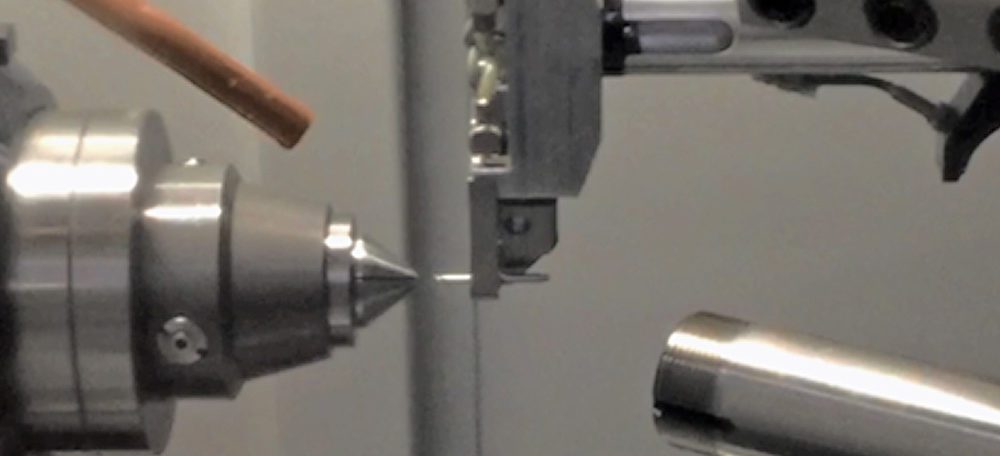
The global dental drills and burrs market is expected to display annual growth rate of approximately 6.5%. While the market is fragmented experts say that oral disease is increasing and is affecting half of the world’s population. A growing number of dental schools and dentists in developed countries is a key driver for accelerating growth in this segment.
A dental drill is popularly known as a dentist’s drill. While a source of anxiety for many, dental drills are used routinely to perform common dental procedures, like removing decay and are usually fitted to a hand-held mechanical instrument. The hand-held device works at high speeds using dental drills or burrs.

International Standards are defined for all dental rotary instruments, and each instrument is assigned a distinct ISO number code. Most common are HP Shank (ISO104) and RA Shank (ISO204 & 209) with a shank size of Ø 2.35mm.
Due to an increasing demand to grind Ø2.35mm shank medical drills, ANCA has created a special tool loading solution for FX Linear machines to address this need. Many medical drills have a short shank length with a head larger than 2.35mm.
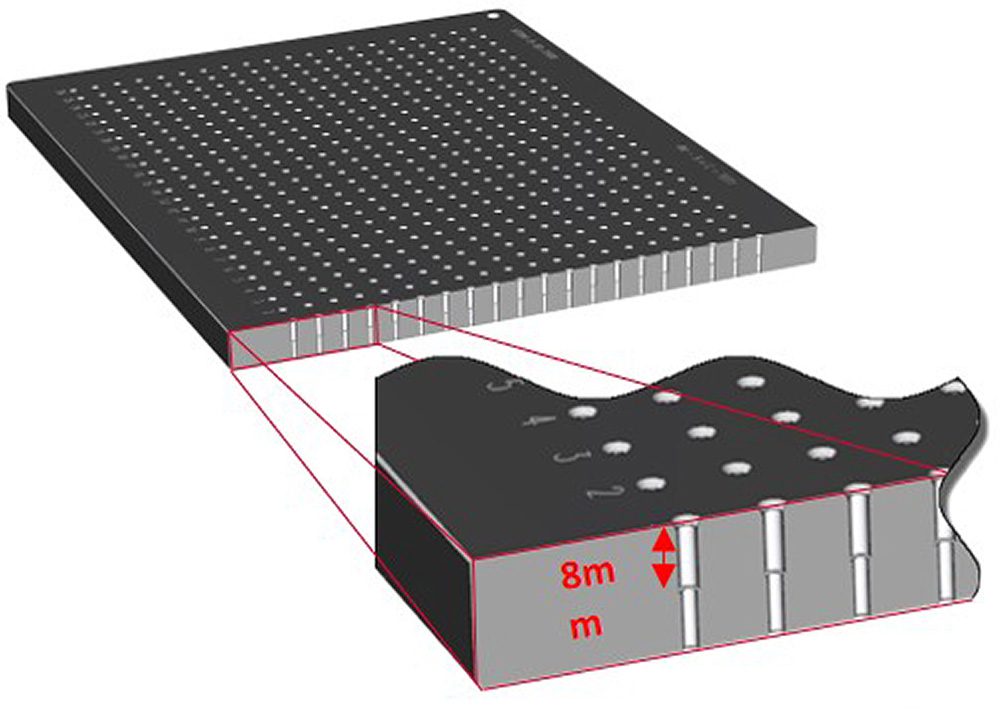
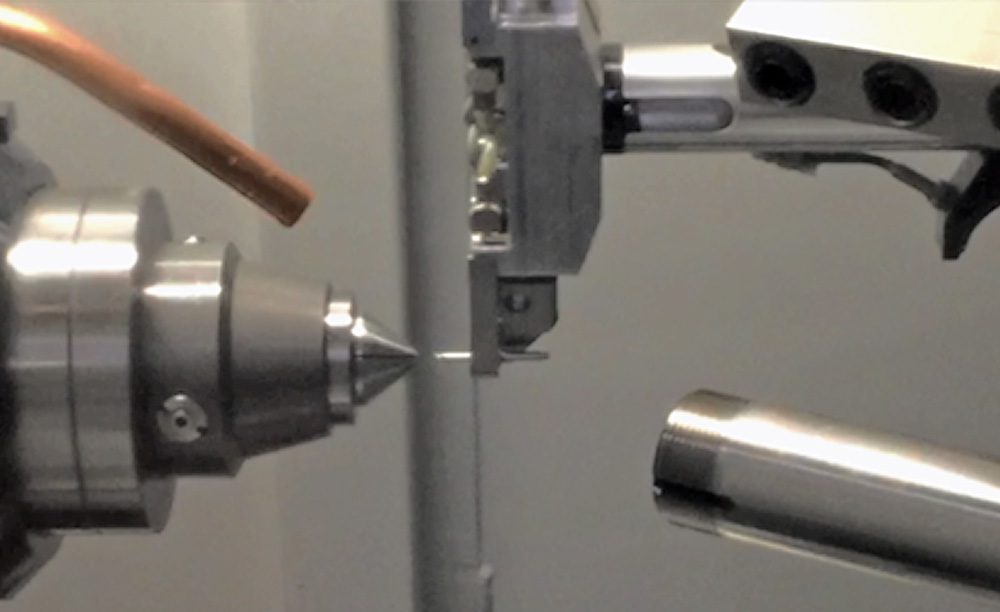
ANCA has designed a special dental drill loading kit including tailored RoboMate pallets for FX machines using a Fanuc 200iD robot loader. The pallet top allows a reduction of the insertion depth of the shank with an 8mm pocket depth, so that drills with only 10mm of available shank length can be loaded. The robot grippers have also been modified for the reduced thickness of medical tools. The medical gripper can accommodate Ø2-10mm x 100mm with a maximum head diameter of 14mm.
Medical instruments are typically manufactured from stainless medical grade alloy, so handling can be sensitive. The small medical drill kit also includes adjustable pressure setting from 1.5bar to 5bar for tool clamping to prevent damage from tool loading, with the pressure adjustable via the RoboMate program.
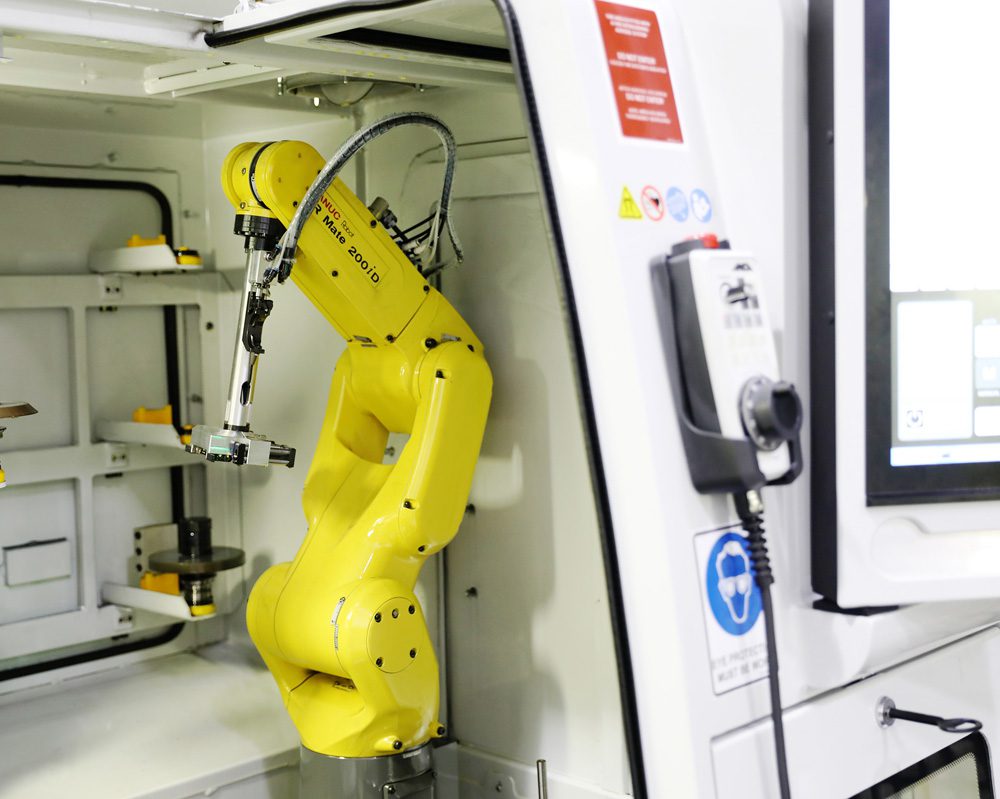
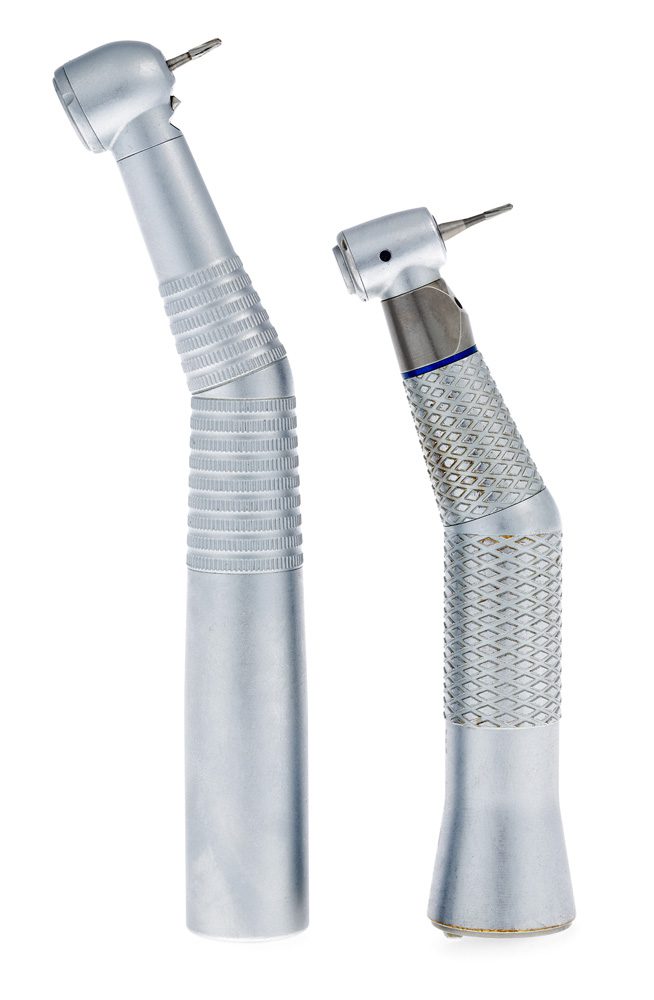
The medical drill package for FX Linear machines is growing in popularity with orders steadily increasing since 2018.
ANCA CNC tool grinders are well suited to grind a vast array of medical instruments. ToolRoom software includes tool design applications for a diverse range of round tools and burrs. Available technologies like white-sticking, in-machine wheel balancing and micro adjustable tool steadies, add to ANCA’s solutions for supporting diverse applications.
For further information, please contact:
Johanna Boland
Group PR and Communications Manager, ANCA
M: +61 407799779
Johanna.Boland@anca.com
ANCA is a market leading manufacturer of CNC grinding machines. It was founded in 1974 in Melbourne, Australia where the company still has its global headquarters. ANCA has offices in the UK, Germany, China, Thailand, India, Japan, Brazil and the USA as well as a comprehensive network of representatives and agents worldwide.
ANCA CNC grinders are used for manufacturing precision cutting tools and components across a diverse range of competitive industries including cutting tool manufacture, automotive, aerospace, electronics and medical.
Continue reading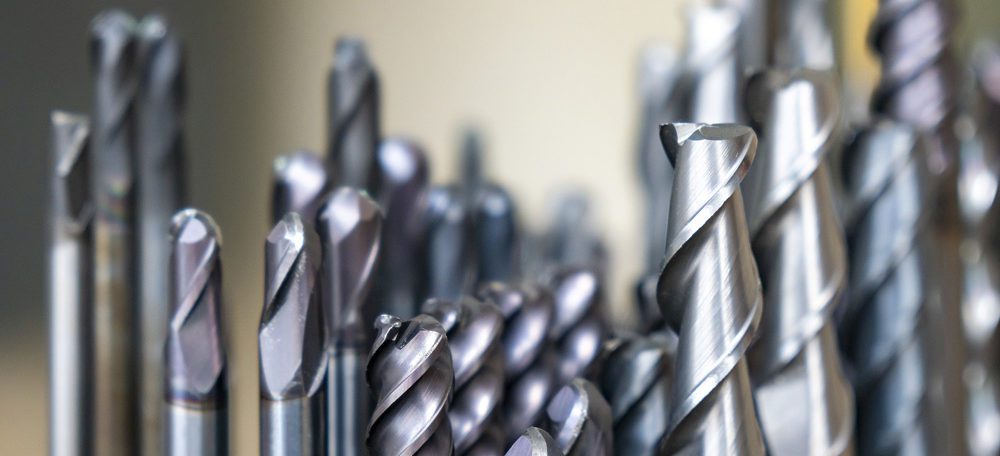
By Thomson Mathew, Software Product Manager, ANCA
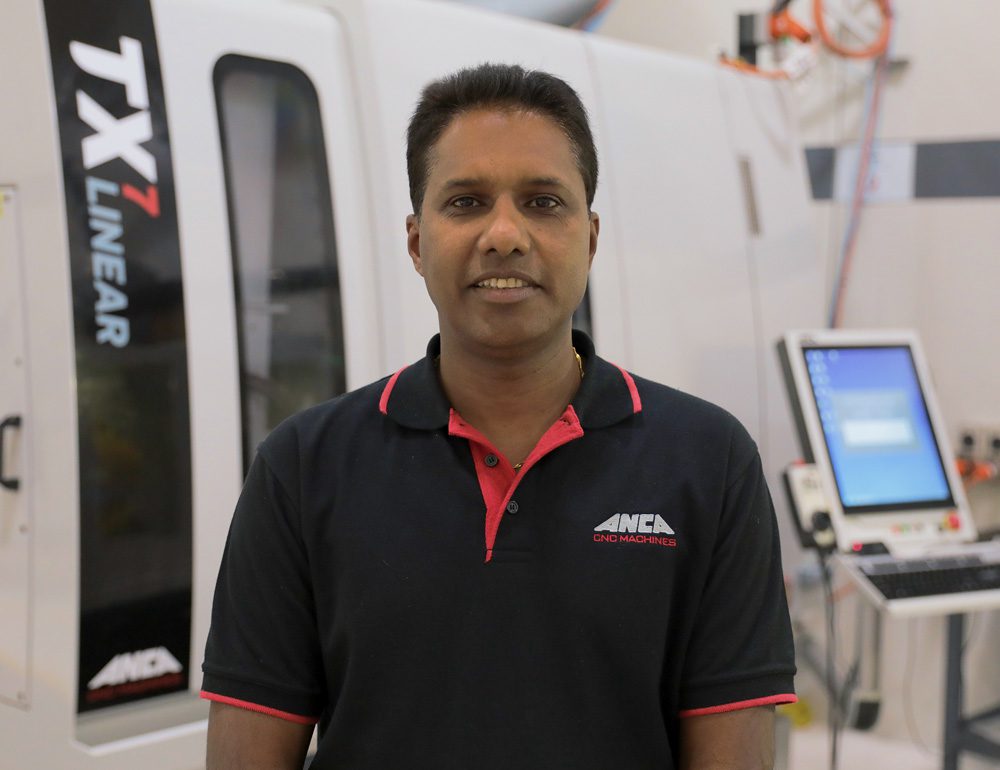
Thomson Mathew, ANCA’s software product manager has a huge wealth of knowledge and expertise, having worked in the cutting tool industry for almost 25 years.
The architect of many of ANCA’s market renowned software products – Thomson has written a technical guide on creating the perfect Endmill running through a five-part instructional series.
In this issue, we look at the factors which will impact the overall performance of an Endmill and “weird” Endmills that have higher geometrical levels of complexity.
PART ONE: GEOMETRY DESIGN AND PARAMETER VERIFICATION
Every Endmill begins with design and a well-designed geometry can make a high performance Endmill.
There are many factors which will impact the overall performance of an Endmill. Four major ones that get cited are the grade or quality of carbide material, the cutting tool geometry design, the precision manufacturing process or quality control and the type of coating.
The hardness of an Endmill’s material, usually carbide, will depend on the grade of carbide in the matrix. Smaller grains mean more substance versus binder, and therefore a harder tool. Exotic coatings will improve lifespan and cutting performance. Quality control means a workshop can get a consistent result.
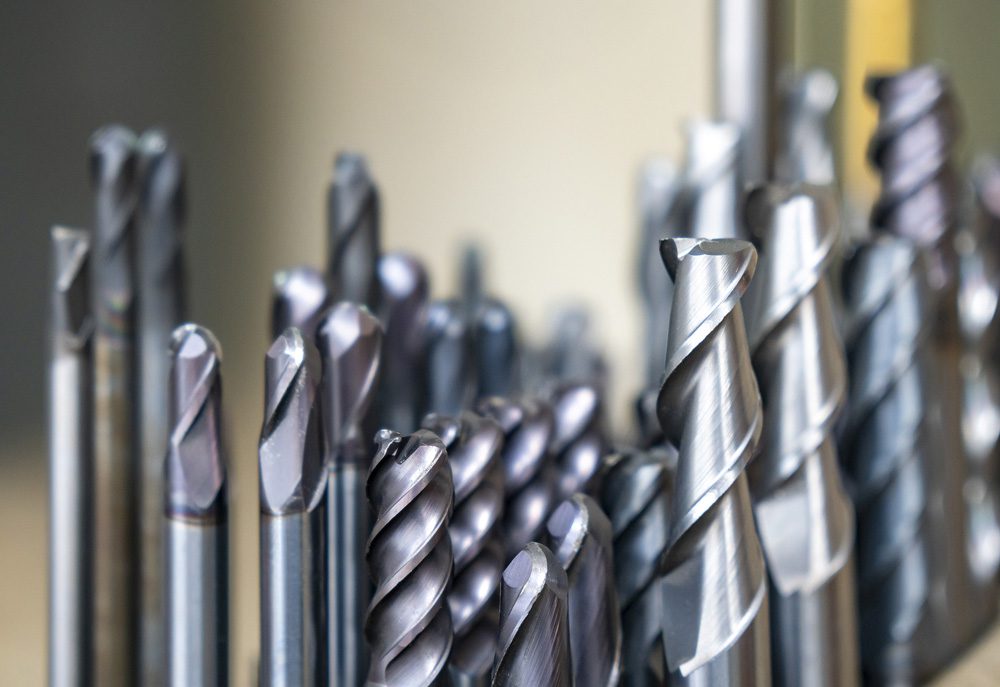
But geometry has an outsized role, one that highlights the blend of art and engineering – and for a long time, trial and error – involved in creating the ideal Endmill. This begins with design. Some of the important factors in Endmill design include the combination of both variable helix and index flute geometry design, core geometry design, the OD clearance angles eccentric versus facet reliefs design, endface design with wiper flats and pad grinding or end dubbing etc. each time from a set of Endmills.
As I have written elsewhere, the progress of the industry has seen Endmills grow increasingly “weird” as toolmakers have sought high material removal rates while avoiding “chatter”.
Regenerative chatter happens when the harmonics between a tool and workpiece are at different frequencies. The two self-excited objects will hit against each other, which is a negative for surface finish and dimensional accuracy, as well as the lifespan of the tool and machinery. It is a drain on productivity and profits.
High helix tools (over 35 degrees) have long been popular for their strength and fast feed and swarf removal rates. While they have these advantages over low helix Endmills for hard materials, they are also the more prone of the two to chatter. Some of the trial and error to combat this has been around variable helixes and pitches and trying to better balance tools. This has led to “weird” Endmills, with higher geometrical levels of complexity.
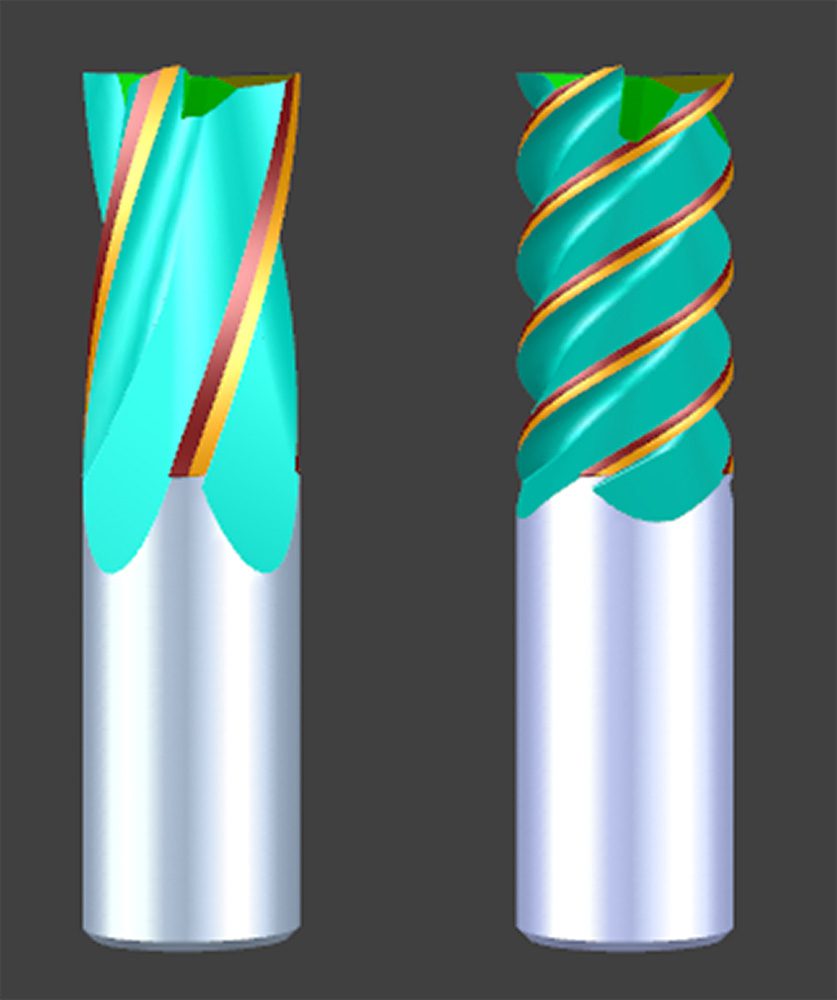
In high helix tools the cutting forces are directed more vertically and less horizontally, which reduces tool deflection and results in quick and efficient chip evacuation.
More positive axial rake lowers cutting forces which helps to increase feedrates. The core of the tool is thicker due to the shape of the helix and the tool is stronger. High helix Endmills are typically used in tougher harder materials because they wear better, although they can also be used in softer materials like aluminium. One disadvantage of high helix Endmills is the tendency to chatter more, and they really bite into the material.
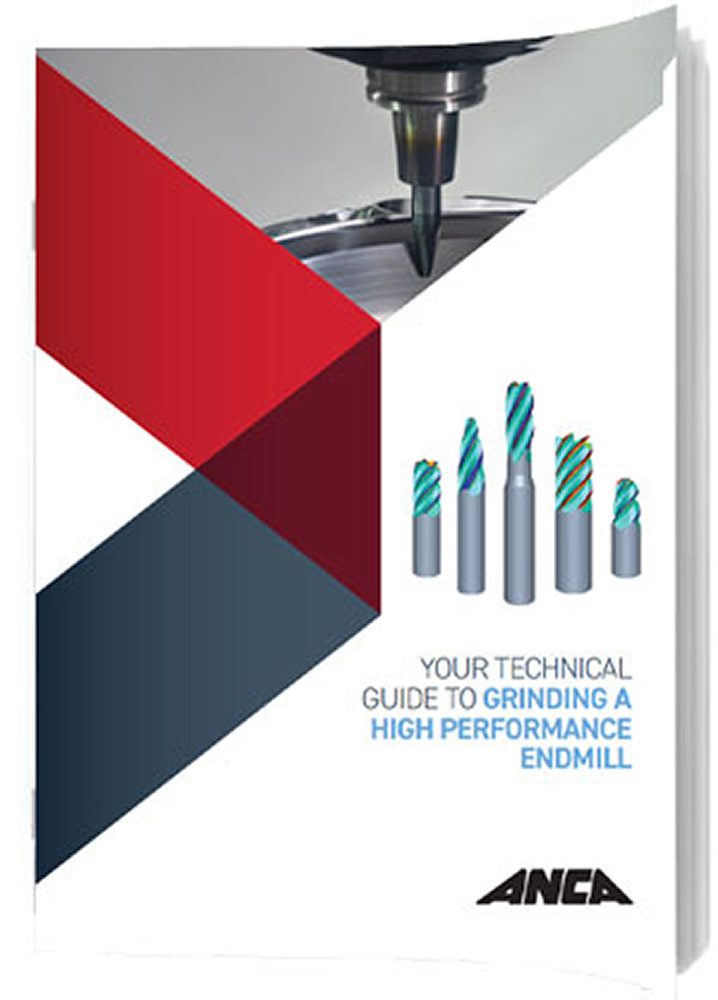
On the contrary, low helix tools are less likely to chatter and typically perform better in soft materials. Their disadvantage is the lower feedrates and hence lower material removal rates. Our understanding of how to mitigate chatter has come a long way and involves no guesswork nowadays. The geometry and design are purely based on material to be cut whether it is soft or hard.
Variable helix end mills with variable index are considered state of the art these days. The idea is to vary the helix along the flute length or from flute-to-flute. The aim of the variable helix is to fight chatter. Since chatter is a resonance effect, anything we can do to break up the resonance of the flutes beating against the workpiece will reduce chatter. The tool balancing capabilities in the RN34 release of ANCA’s ToolRoom software is the perfect solution to combat chatter.
For further information, please contact:
Johanna Boland
Group PR and Communications Manager, ANCA
M: +61 407799779
Johanna.Boland@anca.com
ANCA is a market leading manufacturer of CNC grinding machines. It was founded in 1974 in Melbourne, Australia where the company still has its global headquarters. ANCA has offices in the UK, Germany, China, Thailand, India, Japan, Brazil and the USA as well as a comprehensive network of representatives and agents worldwide.
ANCA CNC grinders are used for manufacturing precision cutting tools and components across a diverse range of competitive industries including cutting tool manufacture, automotive, aerospace, electronics and medical.
Continue readingNew technology has enabled F.O. Select to easily achieve greater quality, efficiency and durability of their cutting tools
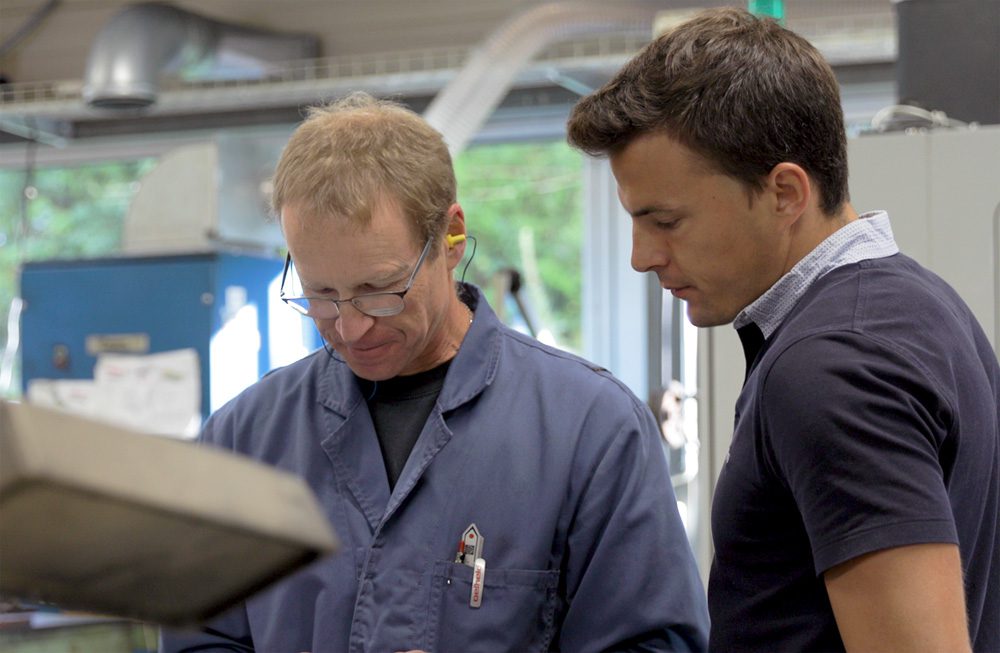
Loïc Jacot, 5th Generation family member of F.O. Select said, “Our business was founded in 1886 by my Great Great Grandfather when he started manufacturing razor blades. At the beginning of the 20th century, the multinational company “Gillette” entered the European market and Arnold Schumacher decided to diversify the production with different cutting tools.”
“Our customers like the fact that we are still a family business. We have 130 years of experience in the production of tools. In general, we can say that we work with all main key cutting machine producers on the market. Since all people in the world use keys you need to cut millions and millions of keys every day. The market is niche but worldwide.”
F.O. Select has the utmost respect for legendary Swiss quality. They specialize in the manufacture of key cutters, cutter wheels and fine tooth cutters. Their dynamism and expertise has led the business to strive constantly for innovative performance and quality assurance. Production wise, the company has leading-edge technology that combines traditional craftsmanship with today’s modern manufacturing methods.



Loïc continues “We produce all our products in-house so we have a control over the whole production process. We produce about 100,000 pieces a year and export our products in 75 different countries with a very short lead time of 48 hours. Keys are becoming more complex because people want more security. Since the market is shifting towards precision we needed more precise machines to manufacture the keys.”
“In Switzerland, if we want to be competitive, we have to be automated, because in Switzerland everything is very expensive. We looked for the best solution for our production needs, understanding that cost reductions could be achieved with better efficiency and productivity. Investing in capital equipment is expensive and we needed to calculate if we should buy a new machinery. We looked at how the ANCA FX5 grinding machine would help us in the production process in terms of productivity through automated solutions. Quality is also very important to our business.”

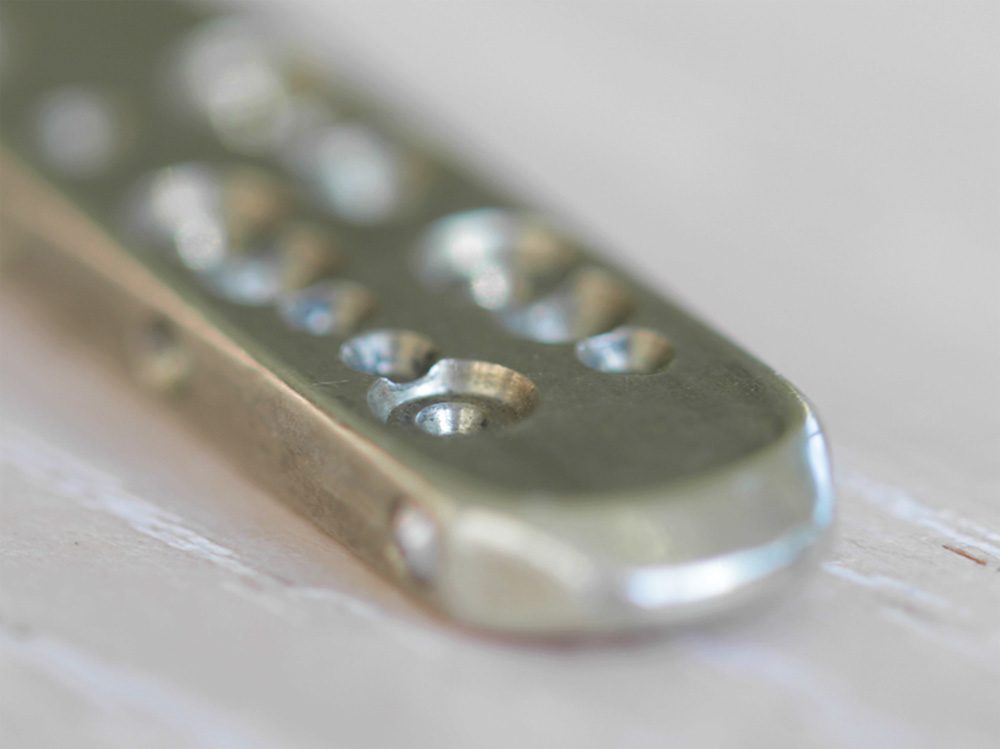
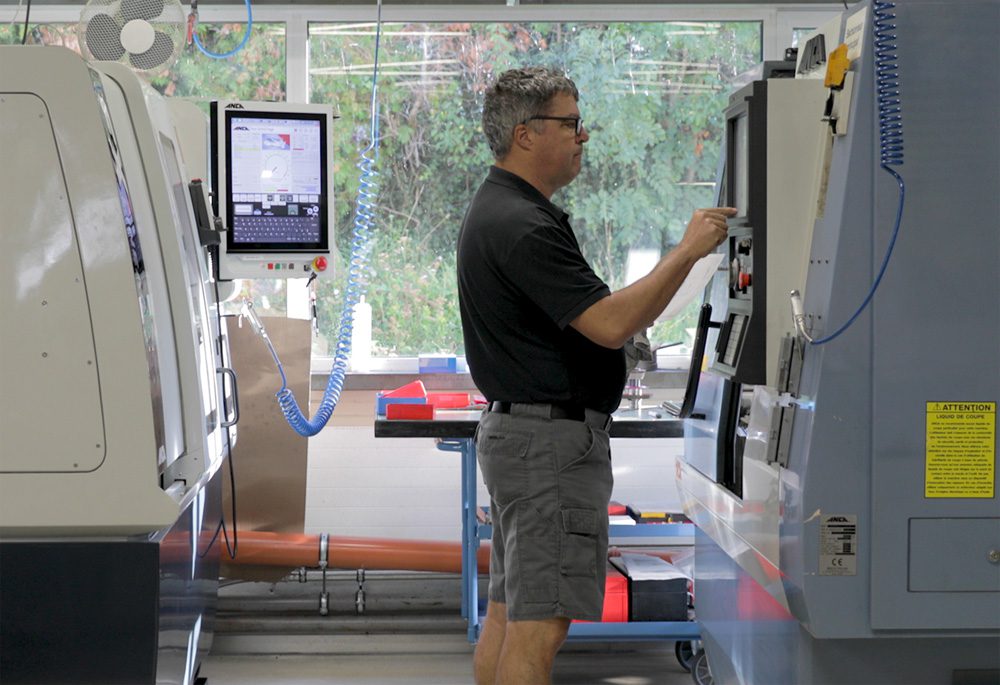
“We have achieved these savings by investing in equipment that can run without human intervention, or ‘lights out’. This means they can run, producing tools, after office hours – during the night and weekends unattended.”
“In fact, since we installed our FX5 ANCA grinding machine we have been working 24 hours seven days a week.”
“New technology is very important because they bring efficiency, reliability, and precision. Our new ANCA machine is very precise, automated; and thanks to the laser we can measure the pieces on the machine and the machine will, by itself, change the software to make the measurement correct. This is crucial when working unmanned during the night or weekend.”
“The ANCA machine is easy to set up because the software is user friendly. We had no experience how to set up grinding machine producing endmills before our first ANCA machine. And now we have two and in the future maybe more.”
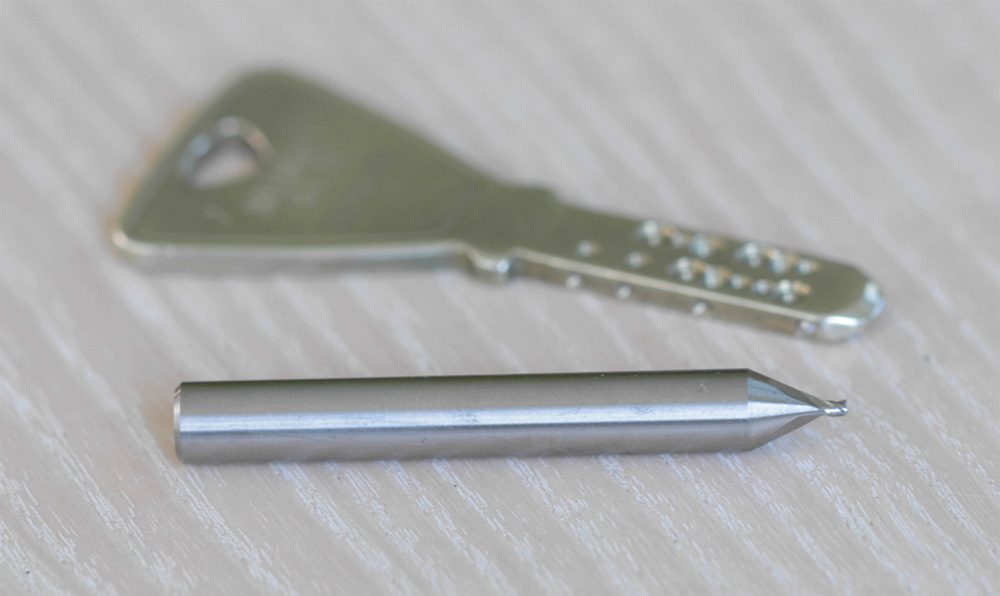
“We received training from ANCA to help set up the machine correctly. The robot is very easy to set up, so in a few minutes, you can change the diameter or you can change the table and the machine will be ready for production. And the good thing also is, I mean, the machine is more compact. I mean in comparison — if we compare our old ANCA machine and the new one, the new one is maybe 30% smaller.”
“We have a bright future because we have modern machines, precise ones, automated. And since we control the whole production process we developed our know-how and we produce more precise and more durable tools,” Loïc Jacot, F.O. Select.
For further information, please contact:
Johanna Boland
Group PR and Communications Manager, ANCA
M: +61 407799779
Johanna.Boland@anca.com
ANCA is a market leading manufacturer of CNC grinding machines. It was founded in 1974 in Melbourne, Australia where the company still has its global headquarters. ANCA has offices in the UK, Germany, China, Thailand, India, Japan, Brazil and the USA as well as a comprehensive network of representatives and agents worldwide.
ANCA CNC grinders are used for manufacturing precision cutting tools and components across a diverse range of competitive industries including cutting tool manufacture, automotive, aerospace, electronics and medical.
Continue reading
Six ways to make sure your manufacturing business is cyber-secure
By Thomson Mathew—ANCA Software Product Manager

While smart factories are revolutionizing the manufacturing industry through innovation, being connected comes with new risk factors that must be addressed. A Deloitte study revealed that 48% of manufacturers identified operational risks—including cybersecurity—as the greatest danger to their factories.
Manufacturing can be a lucrative ‘get’ for cyberattackers, targeting your intellectual property or blocking production. Businesses risk financial, time and productivity losses if they don’t get the balance right. So, how can you make sure your business is safe?
The cloud offers manufacturers an unprecedented level of flexibility, from lights-out manufacturing to remote real-time data. But this level of connection can expose your business to attack.
While it may be your first concern, the risk isn’t limited to connected machines. Manufacturers can also be vulnerable to phishing attacks, ransomware and internal breaches, among others. This means company phones, email addresses and laptops should all be protected. Relying on supply chains also means manufacturing can be disrupted by attacks on suppliers and distributors. Having a clear picture of risk areas is the first step to creating a secure network.
A false sense of security can be devastating to a manufacturing business if a cyberattack eventuates. Even if you’re on top of what needs to be done, you must ensure everyone in the business understands the risks—human behavior is a significant factor in compromised systems!
Operational technology, including tooling machines, creates endless opportunities for manufacturers. In the past, these machines had no external links to networks and so weren’t vulnerable to digital attacks.
Running machines 24/7 means relying on the network to remain secure even when you’re not there. Because of these risks, ANCA machines have been designed to use whitelisting to ascertain networks can only be accessed by predetermined parties. That means new software and devices must be authorized before they can be added, massively reducing the risk of introducing viruses, malware or weak points. Each piece of software has been thoroughly assessed for vulnerabilities before being whitelisted, so manufacturers can be assured of their machines’ security.
If you’re using a tooling machine, you’re exposing your systems to external third parties. The potential consequences are that you could lose data, you could lose productivity time, or you’ll have ongoing maintenance. You’re putting your machine at risk.

Your manufacturing business isn’t just the machines in your factory. It includes other businesses— like material suppliers, logistics companies and even accountants—and all of their extended networks. Any vulnerability they have can affect your business outcomes.
Speak to each of your stakeholders about what they do to protect their networks. You may not be able to change their approach, but it’ll help you to mitigate the risk at your end, for example, by choosing a more secure supplier or looking into vertical integration.
Even the most secure cloud and digital systems can fail. To ensure your IP is as robust as possible, and to limit the impact on your productivity, you should be performing regular offline backups away from your network.
It’s best to be overcautious. Store multiple backups in different places to better distribute the risk of further data loss—and make sure those locations are secure, too.
Automating this process eliminates the need to remember to do it (often until it’s too late) but performing periodic manual backups will give you the best coverage.
Cybercrime is big business—some reports suggest it’s the equivalent of the world’s third-largest economy, inflicting damages in the trillions of dollars every year. Globally, spending on cybersecurity is expected to grow to almost U.S. $350 billion by 2026.[1], [2]
With so much at stake, the goalposts are constantly changing. New viruses appear in the market every day, with rapid patching and greater security a constant feature. To guarantee your business’s ongoing safety, be ready to respond to new threats by frequently updating all software—not just your antivirus—and deferring to machine experts as situations change.
For further information, please contact:
Johanna Boland
Group PR and Communications Manager, ANCA
M: +61 407799779
Johanna.Boland@anca.com
ANCA is a market leading manufacturer of CNC grinding machines. It was founded in 1974 in Melbourne, Australia where the company still has its global headquarters. ANCA has offices in the UK, Germany, China, Thailand, India, Japan, Brazil and the USA as well as a comprehensive network of representatives and agents worldwide.
ANCA CNC grinders are used for manufacturing precision cutting tools and components across a diverse range of competitive industries including cutting tool manufacture, automotive, aerospace, electronics and medical.
[1] https://cybersecurityventures.com/hackerpocalypse-cybercrime-report-2016/
[2] https://cybersecurityventures.com/cybersecurity-market-report/
Continue reading